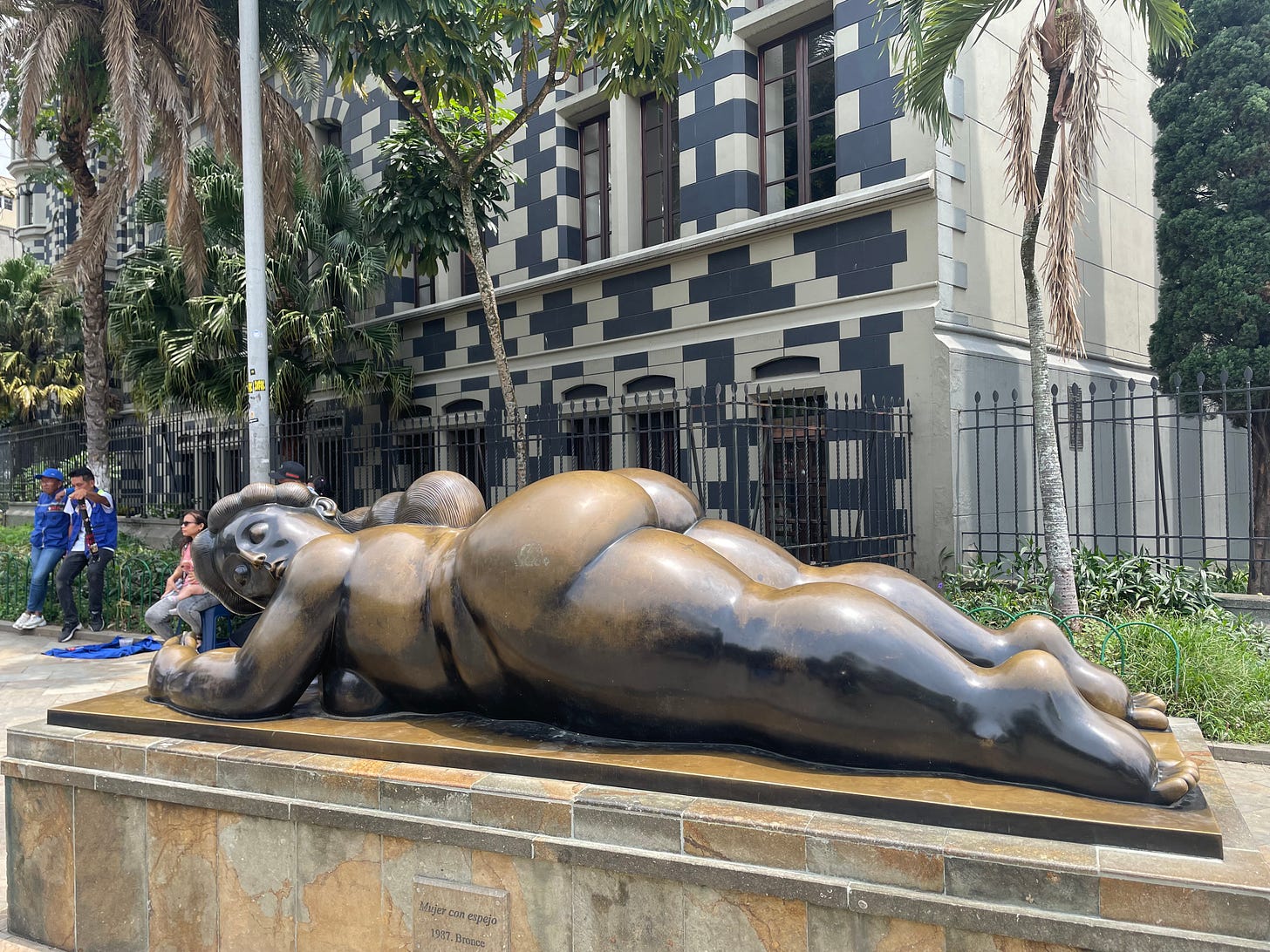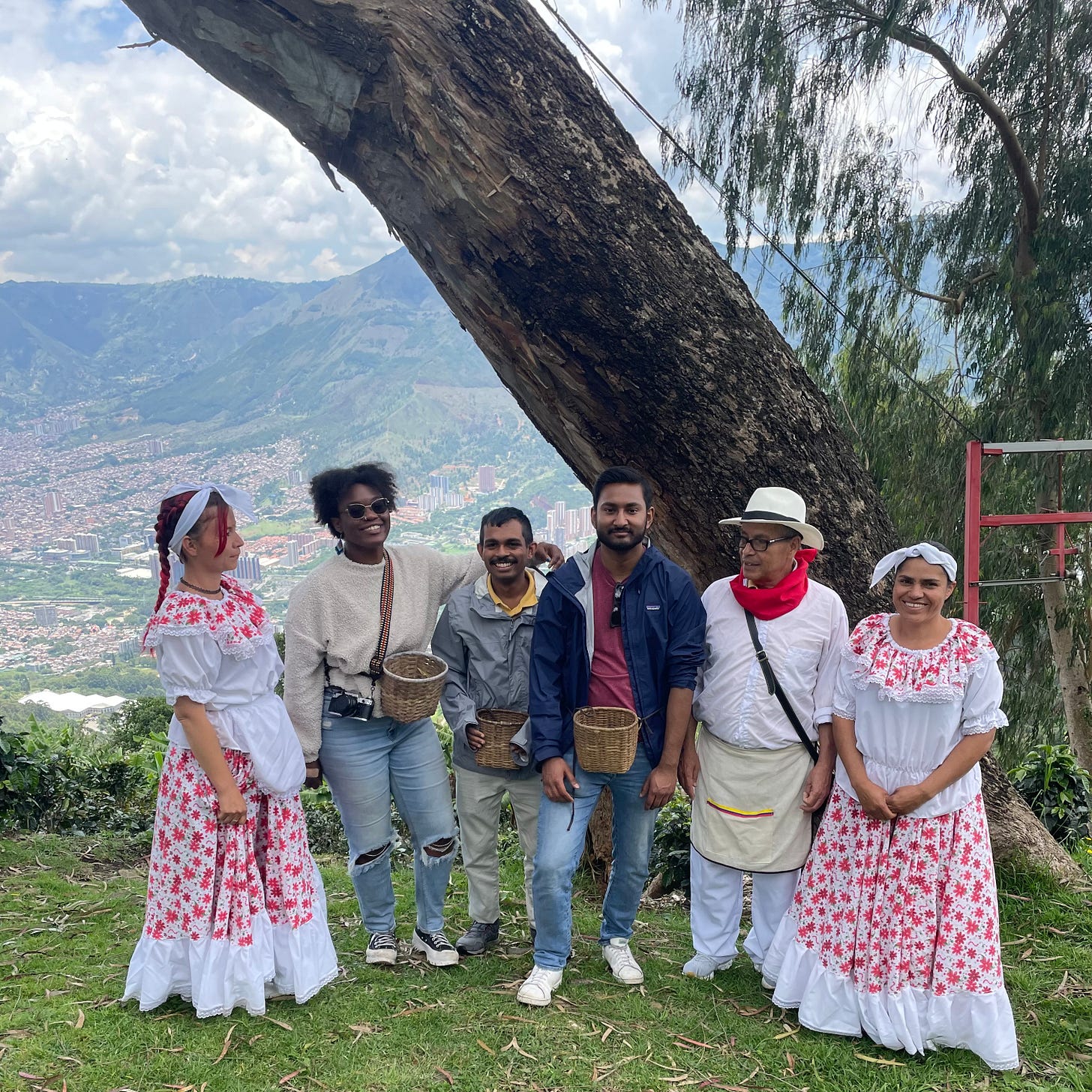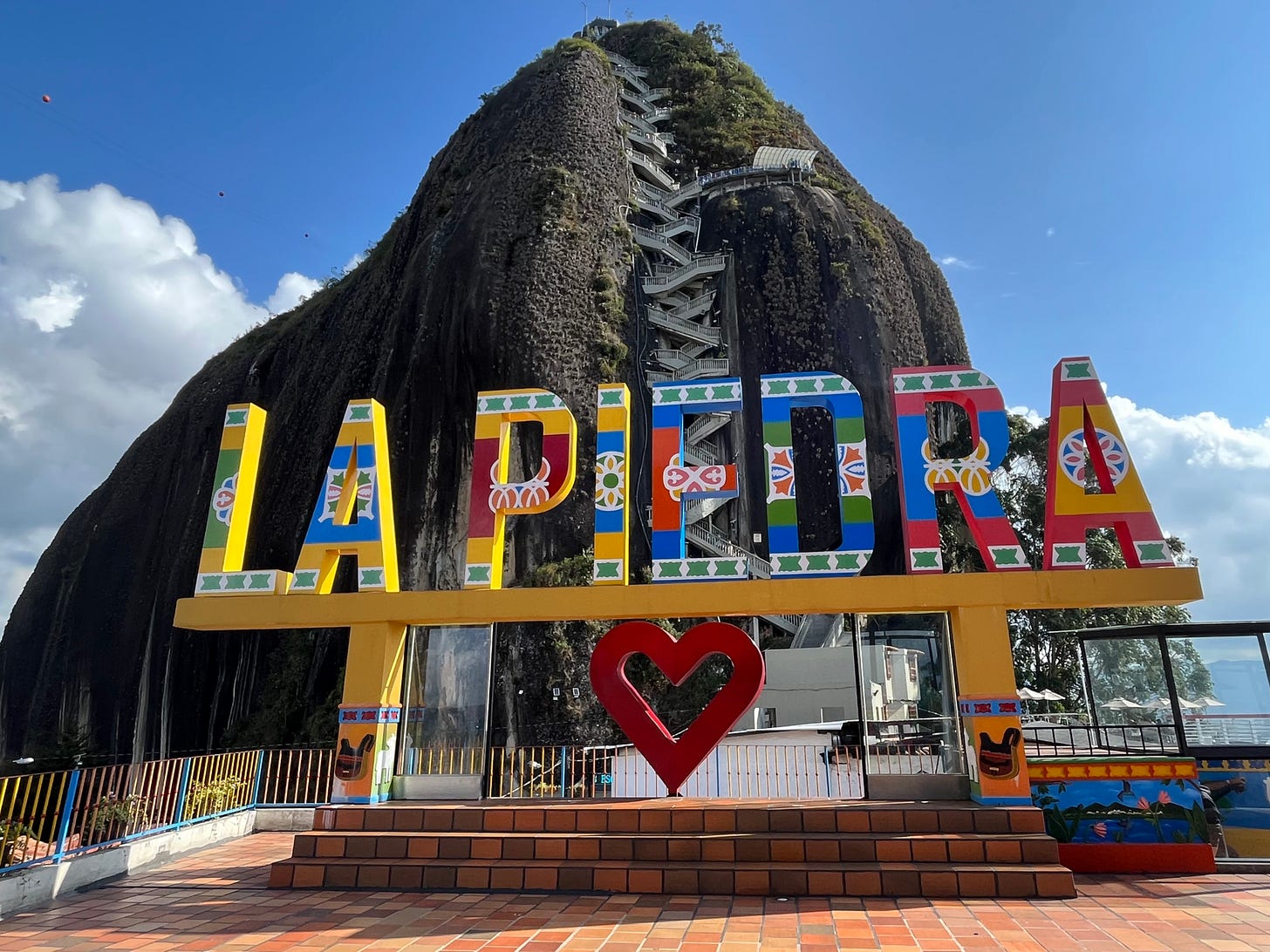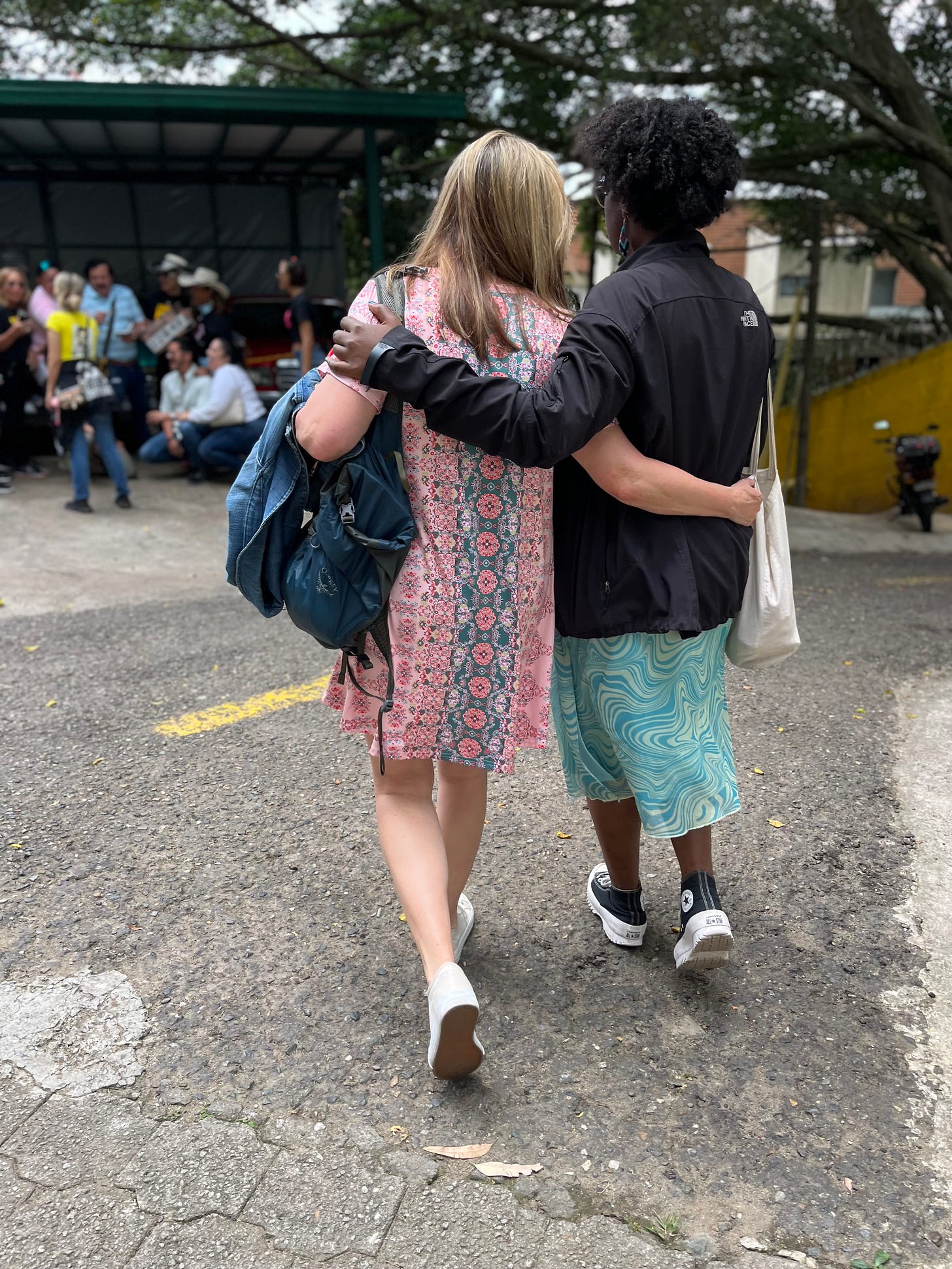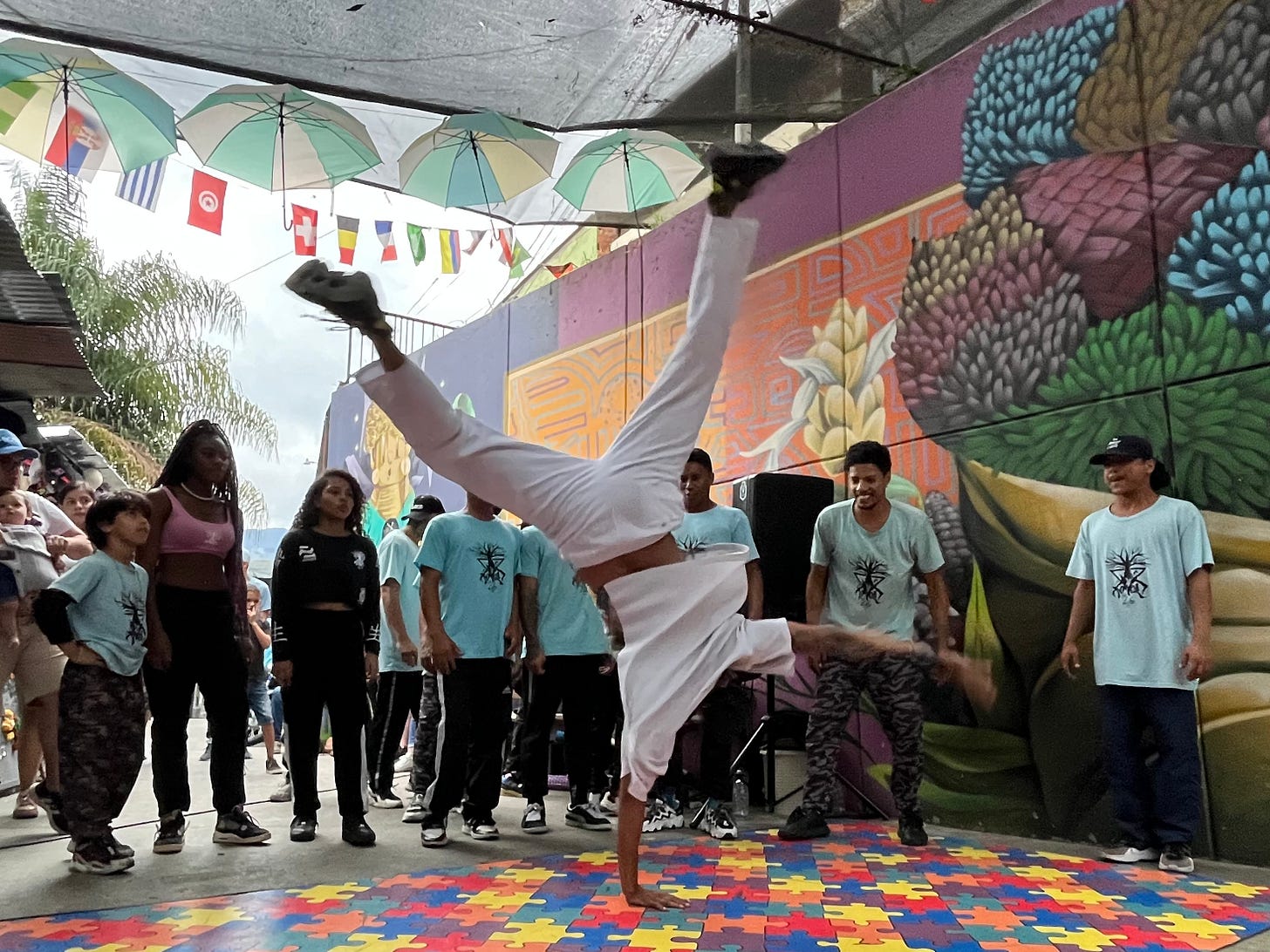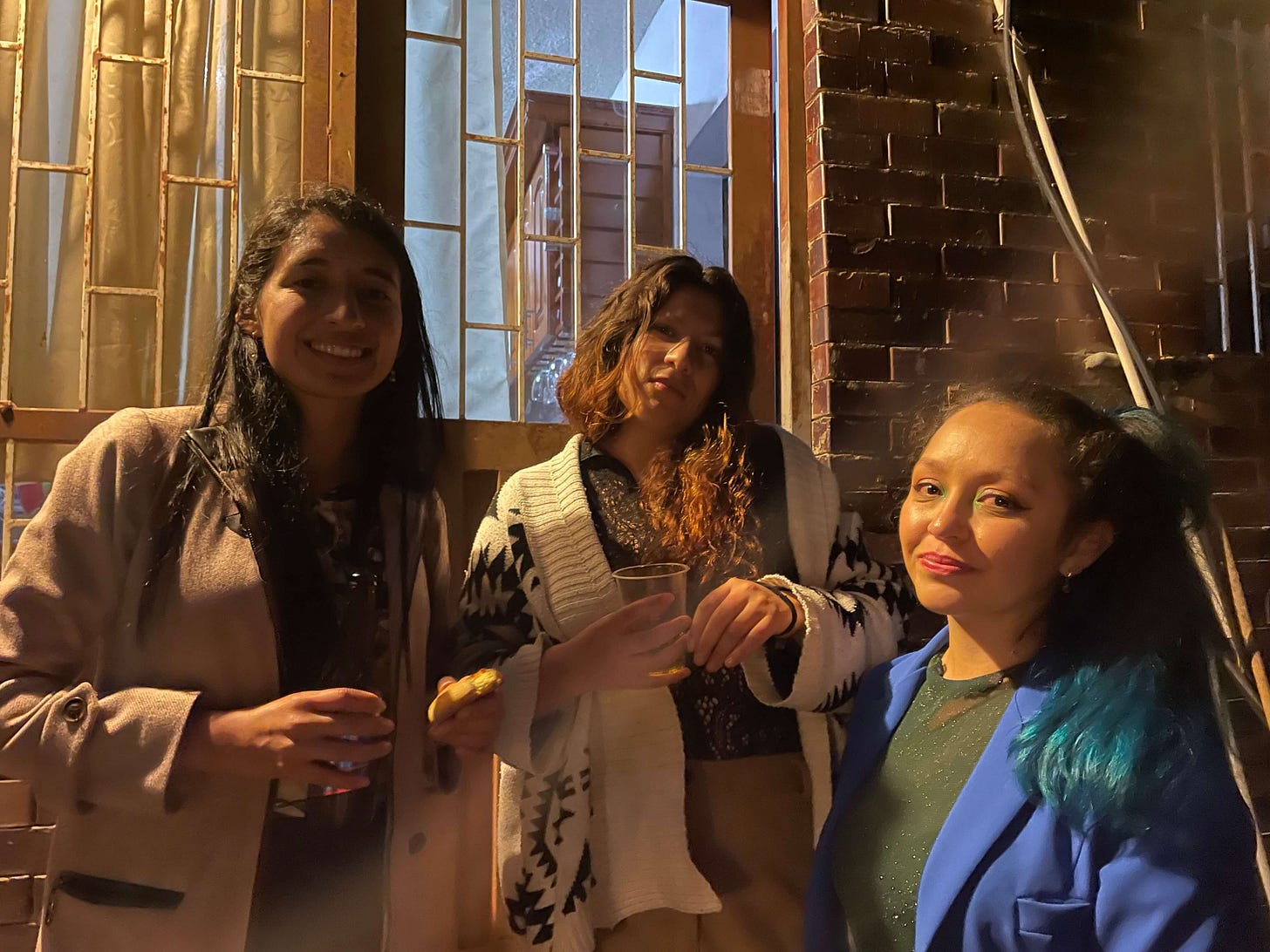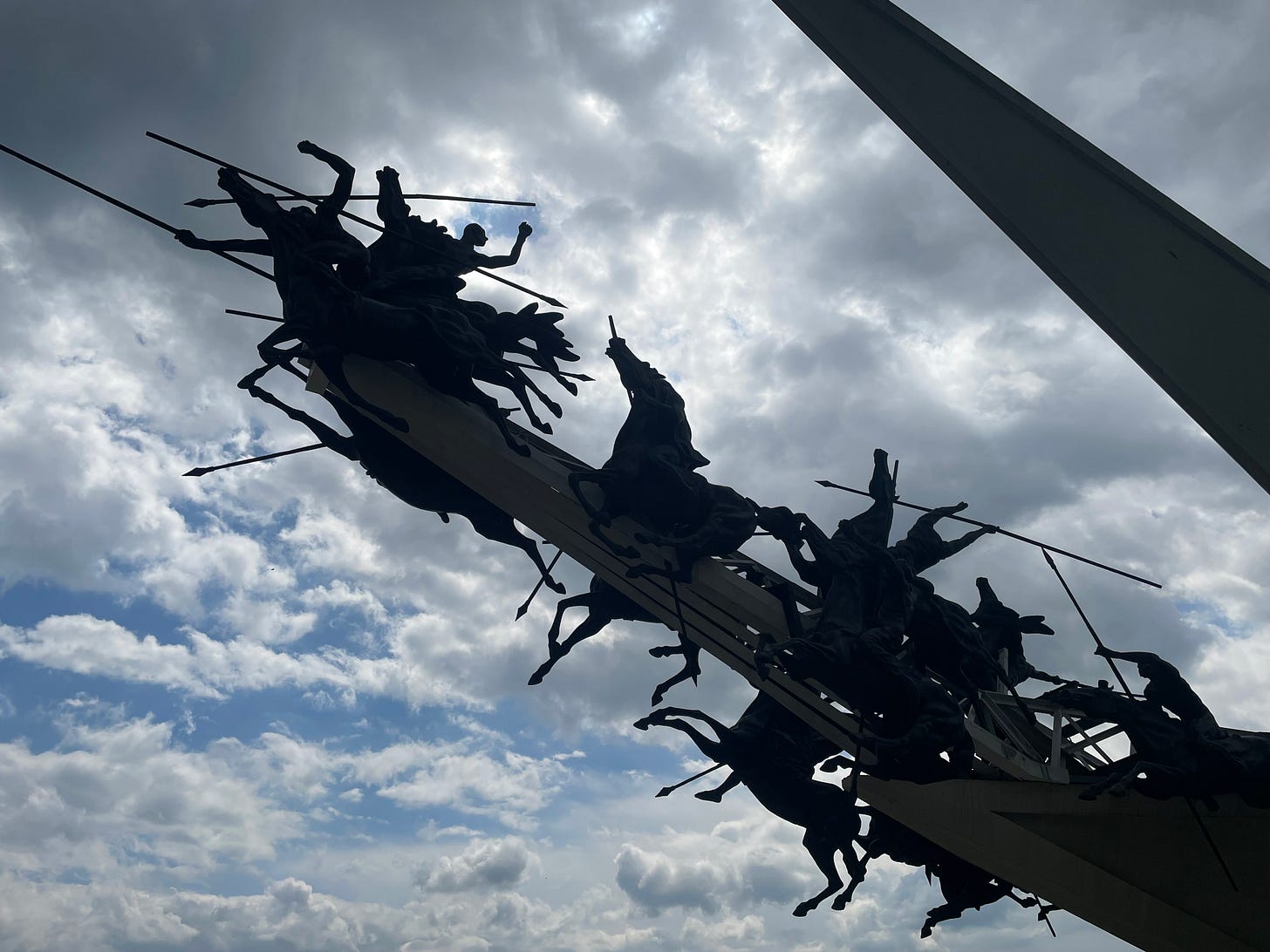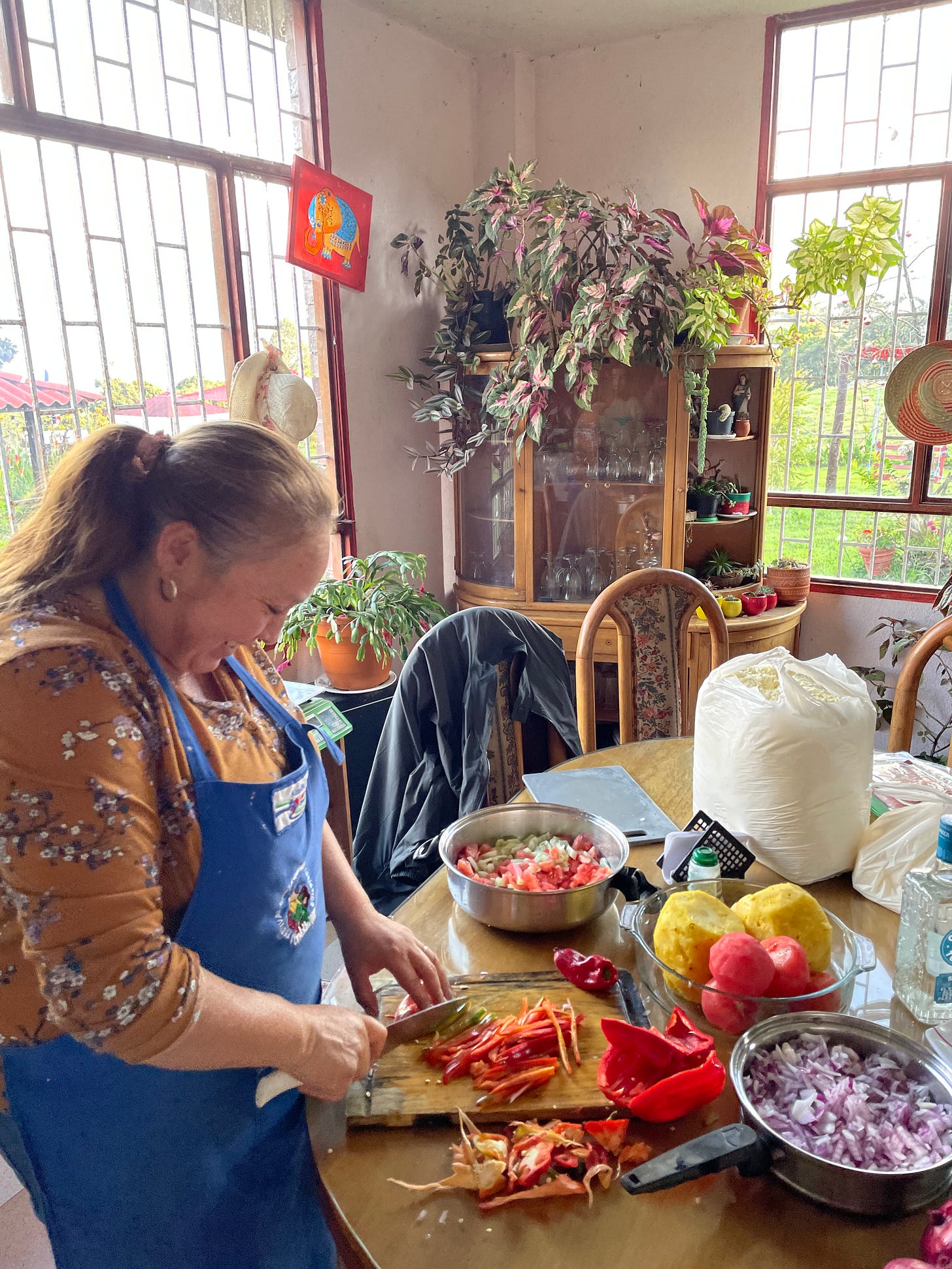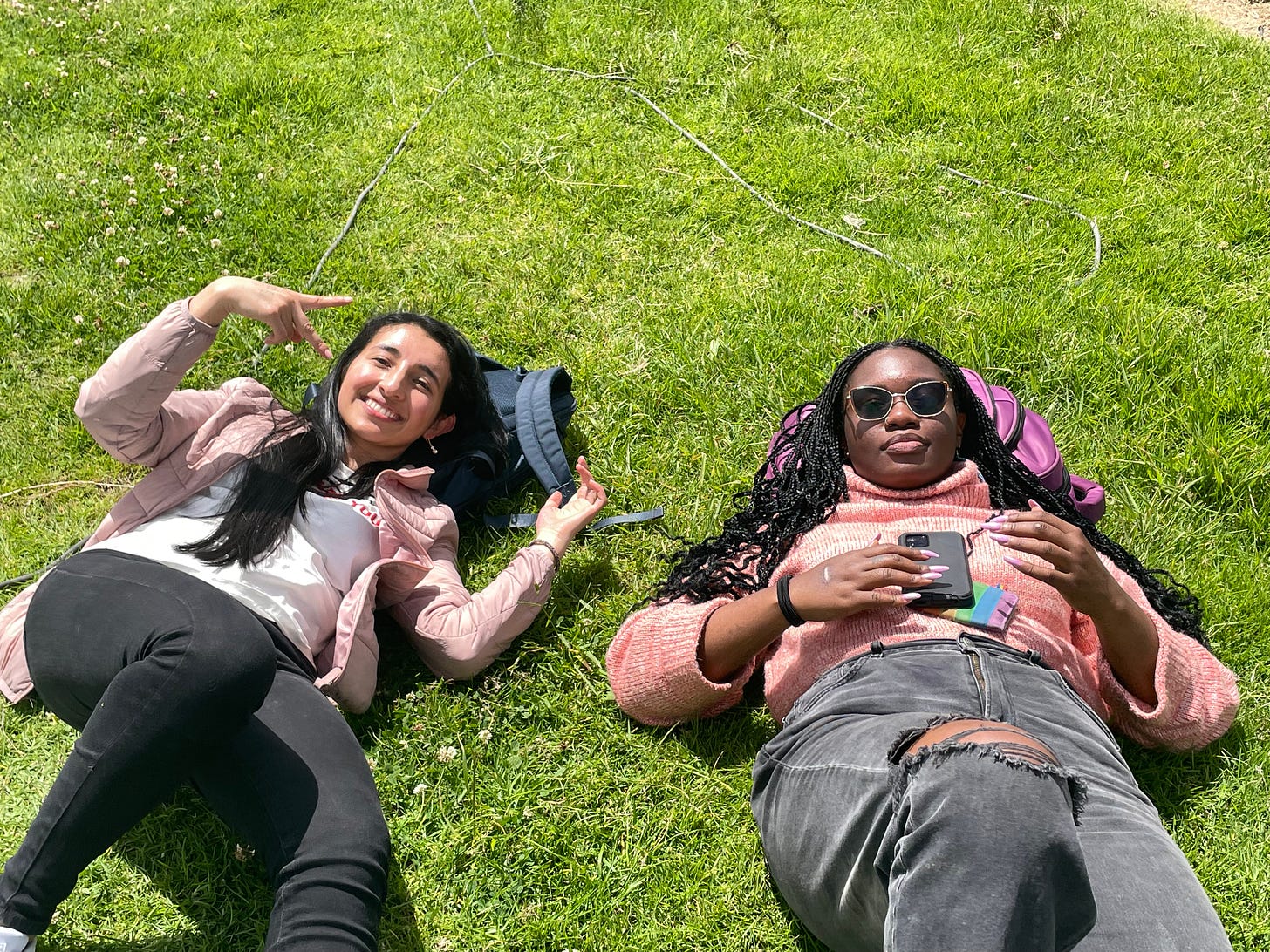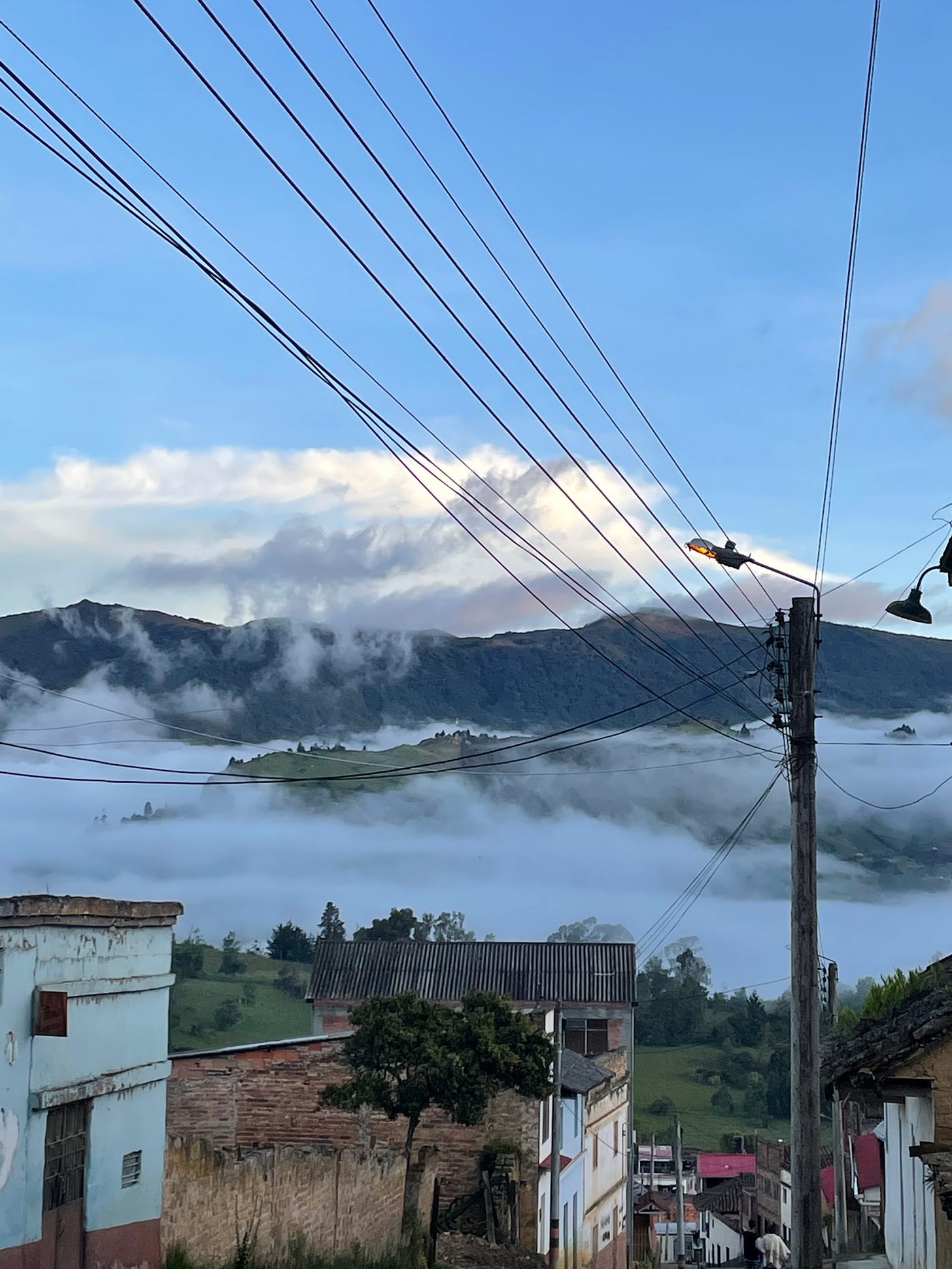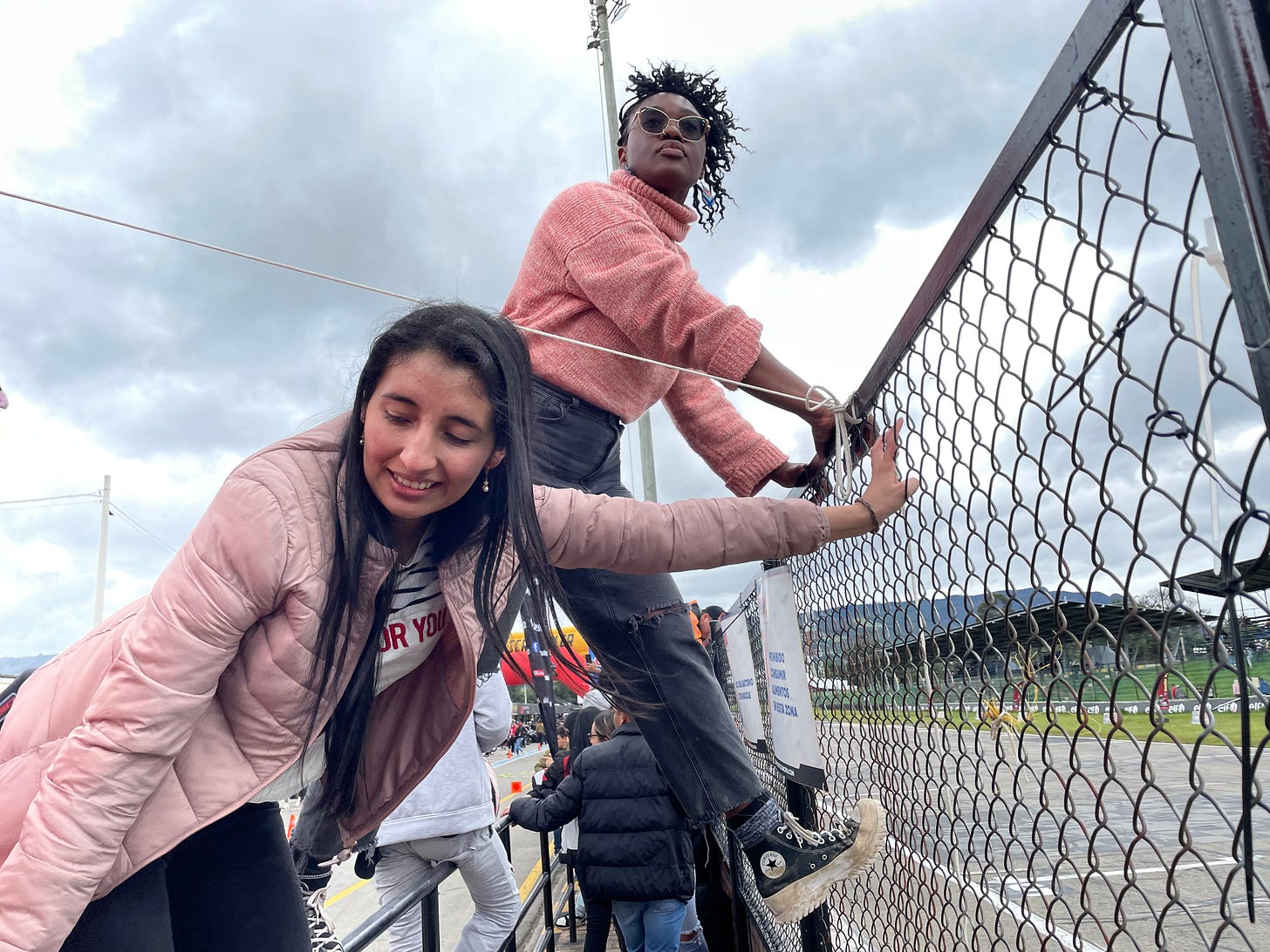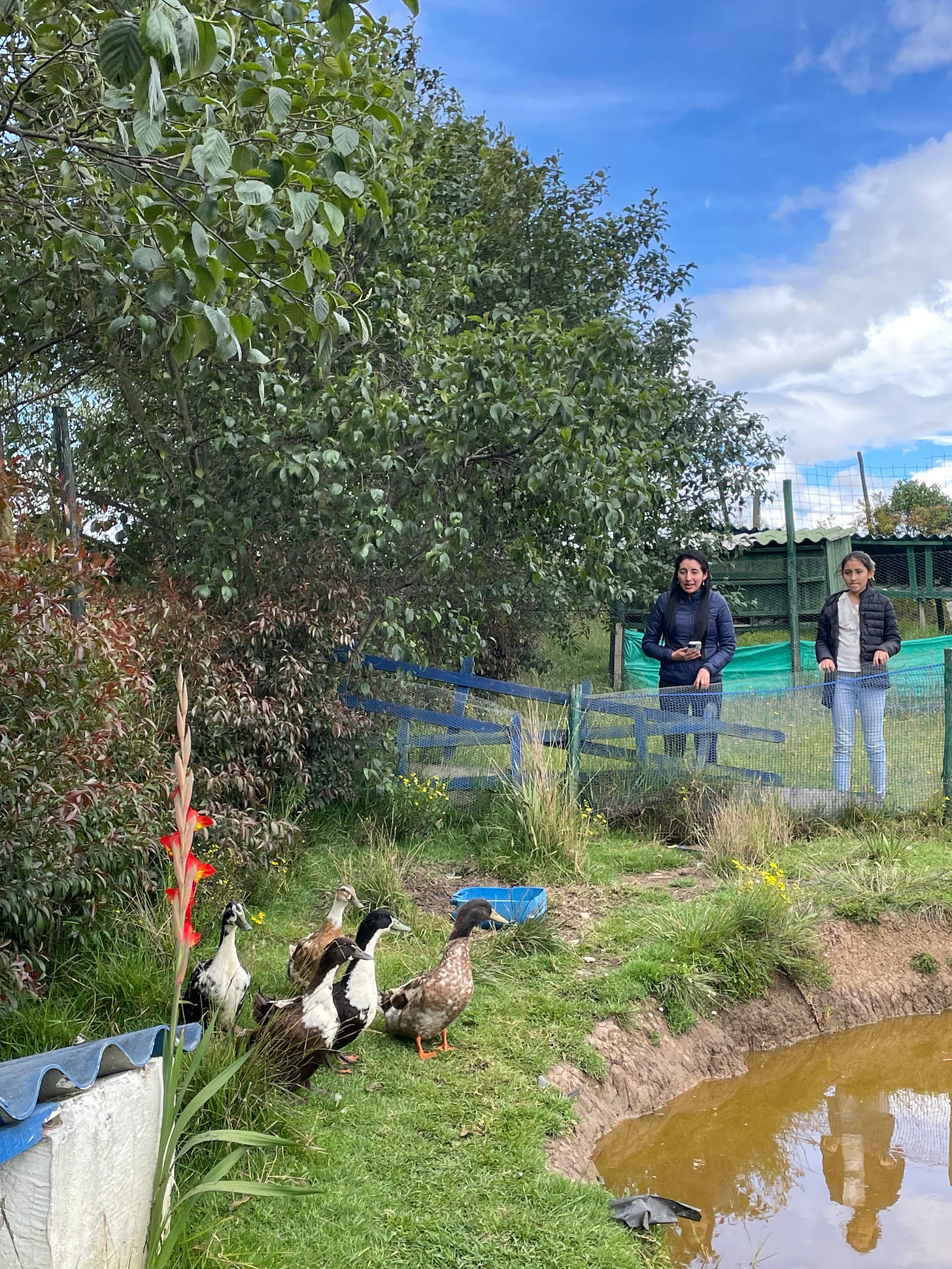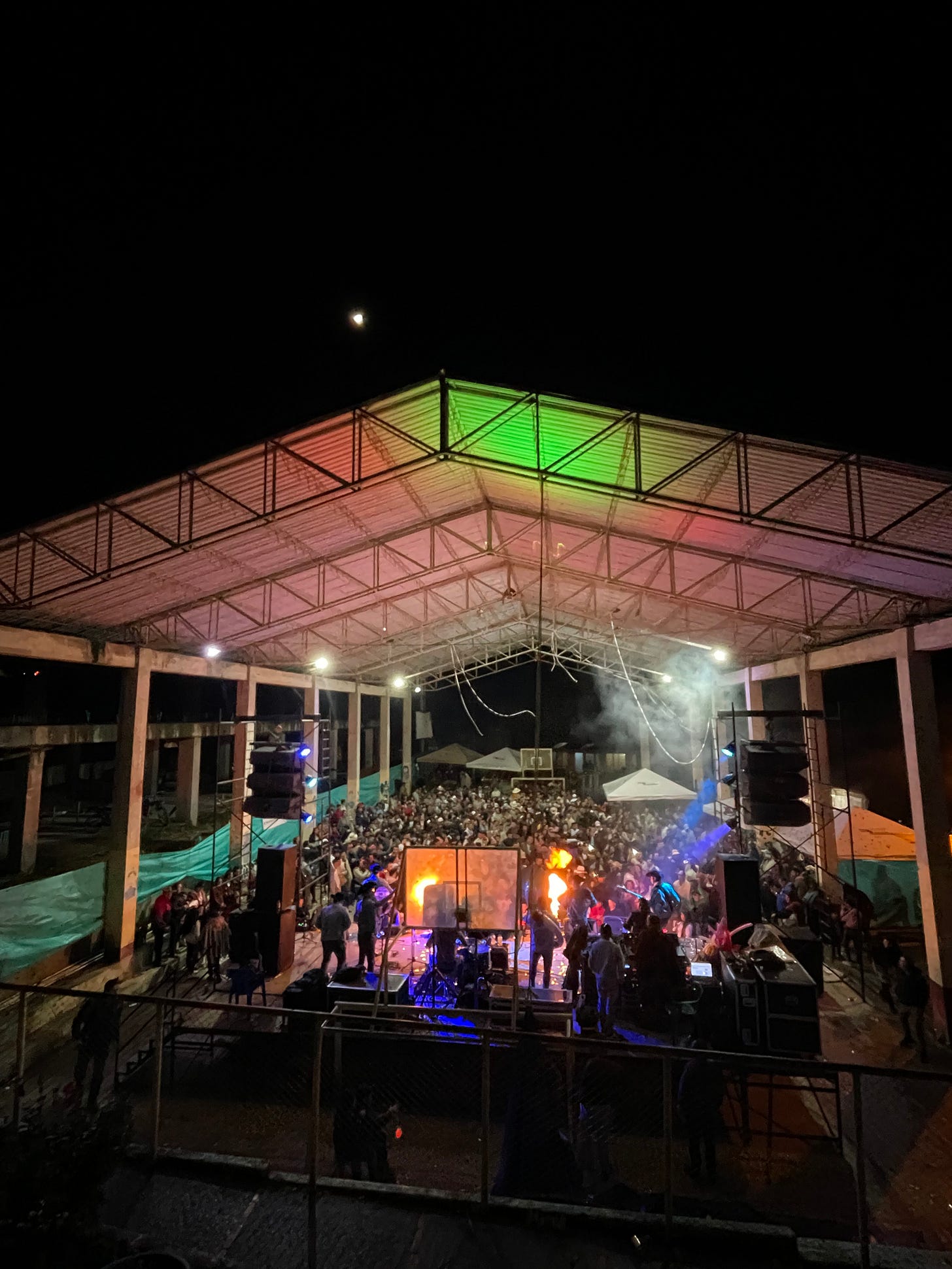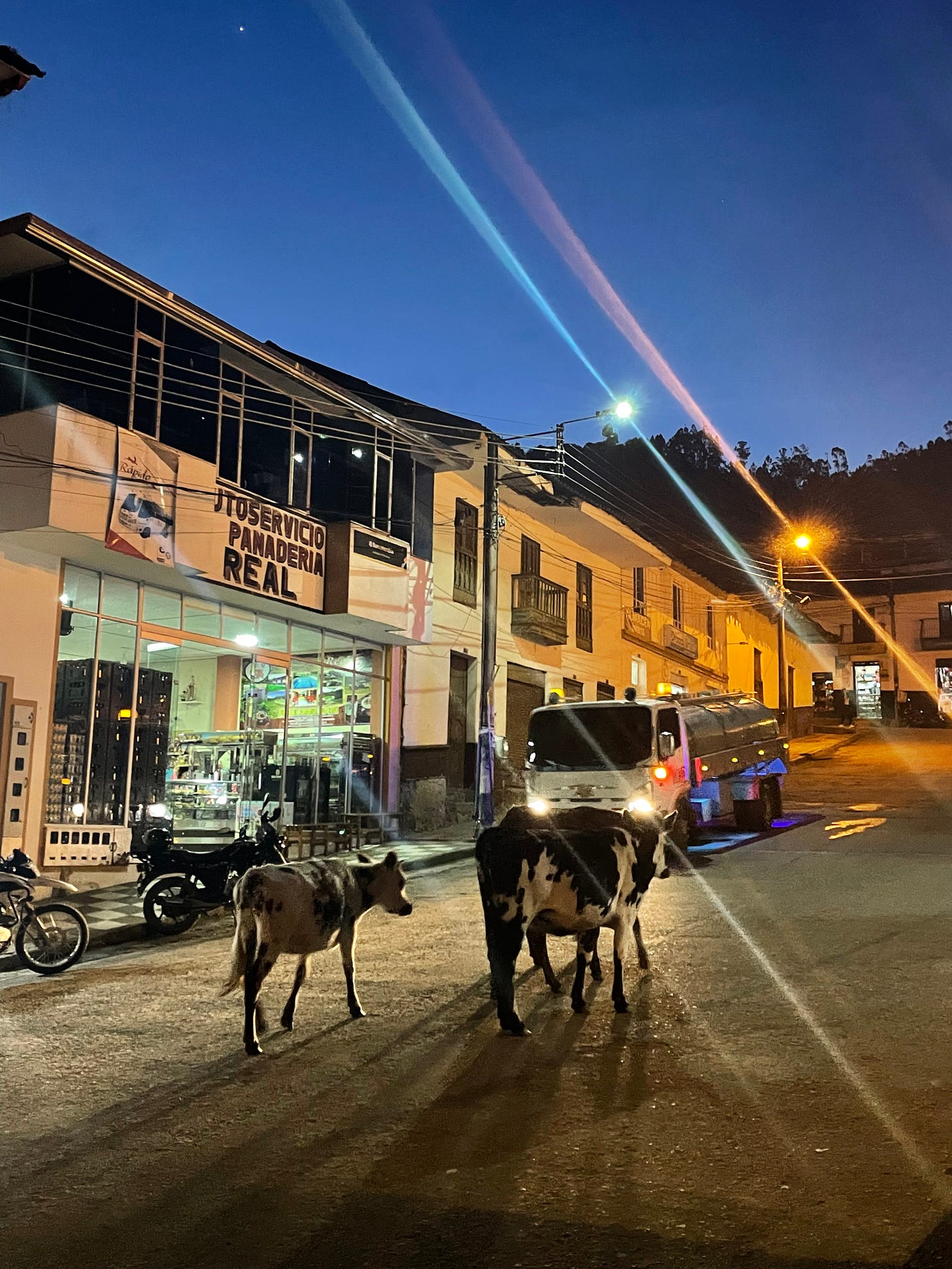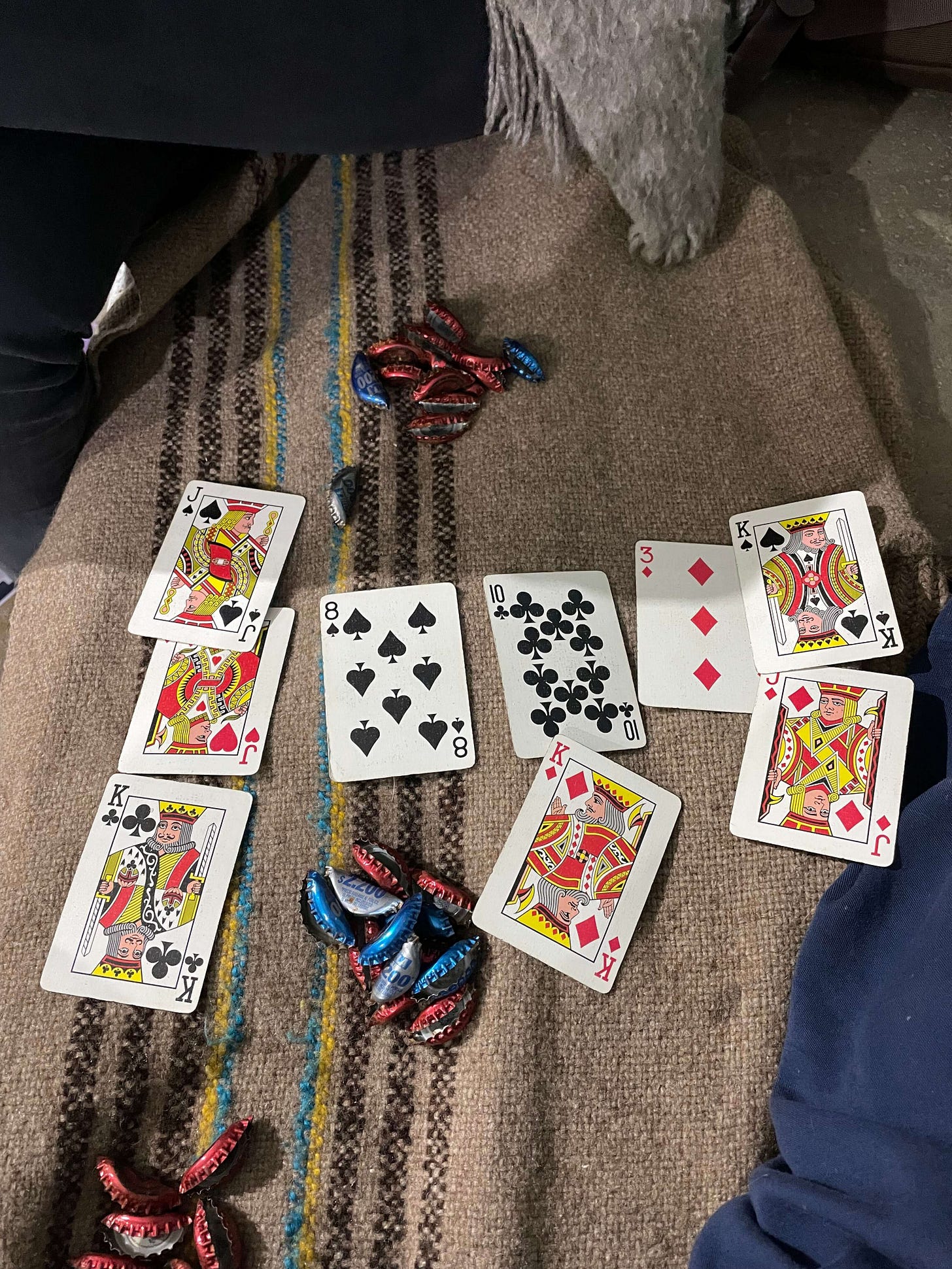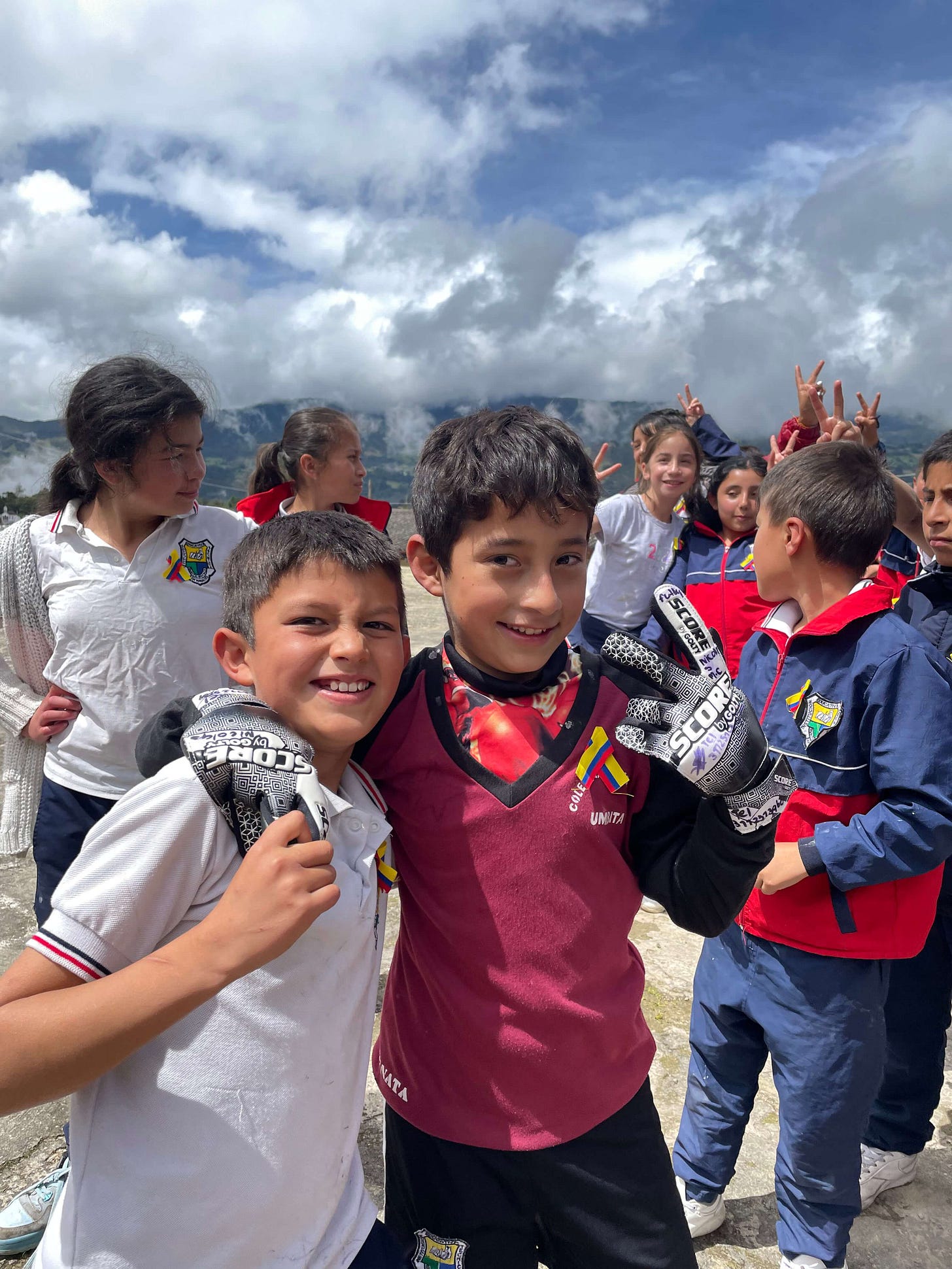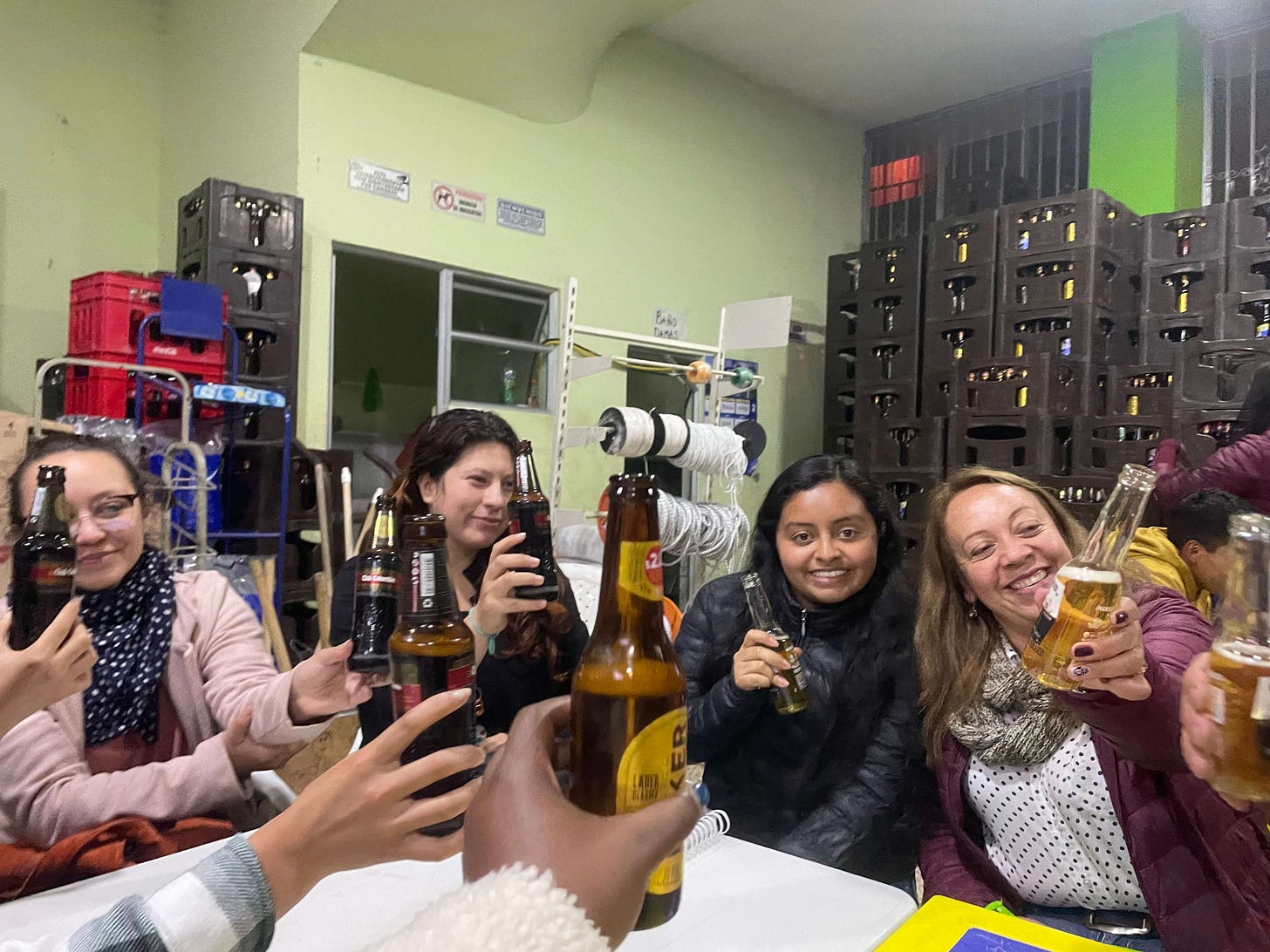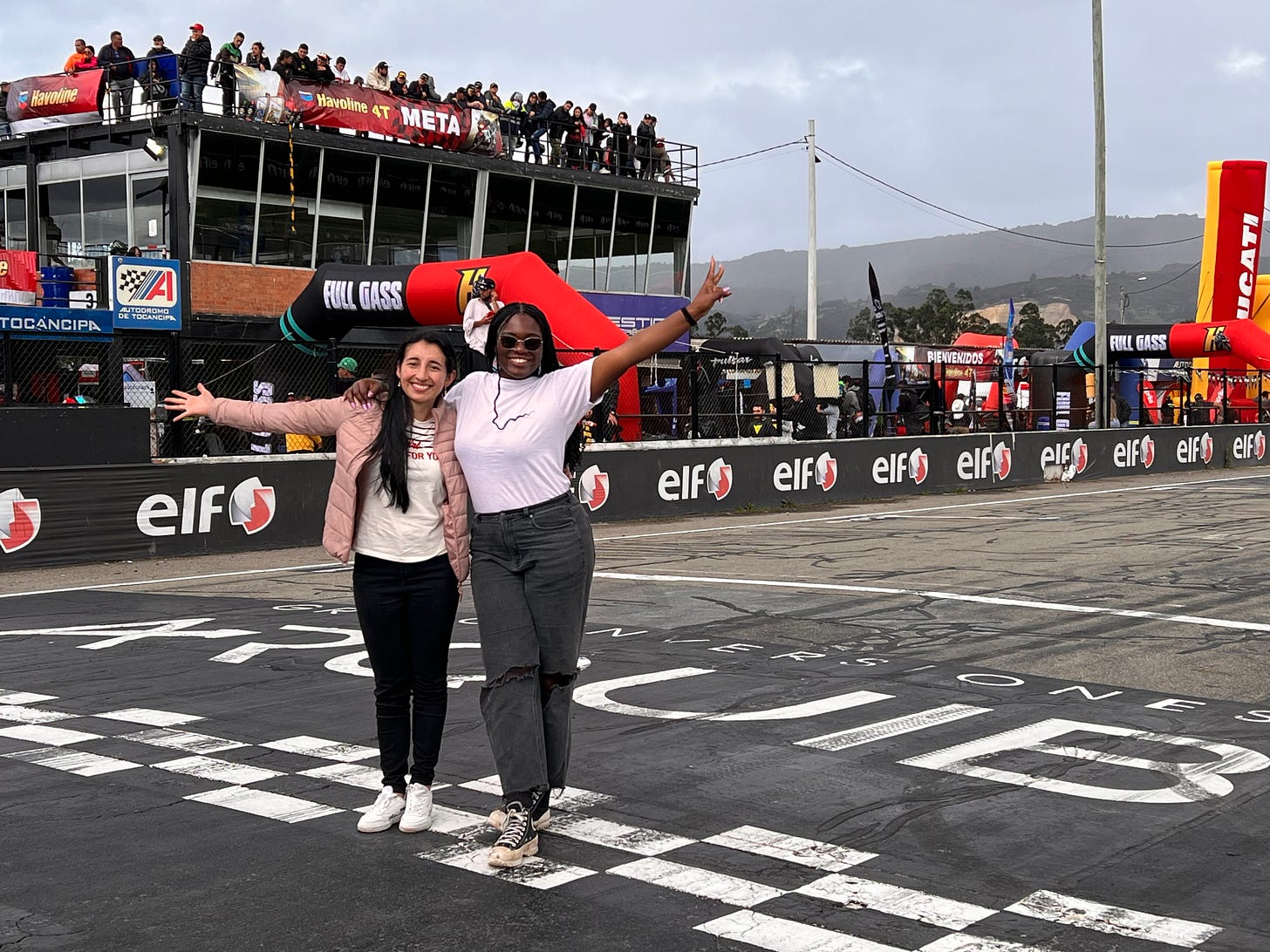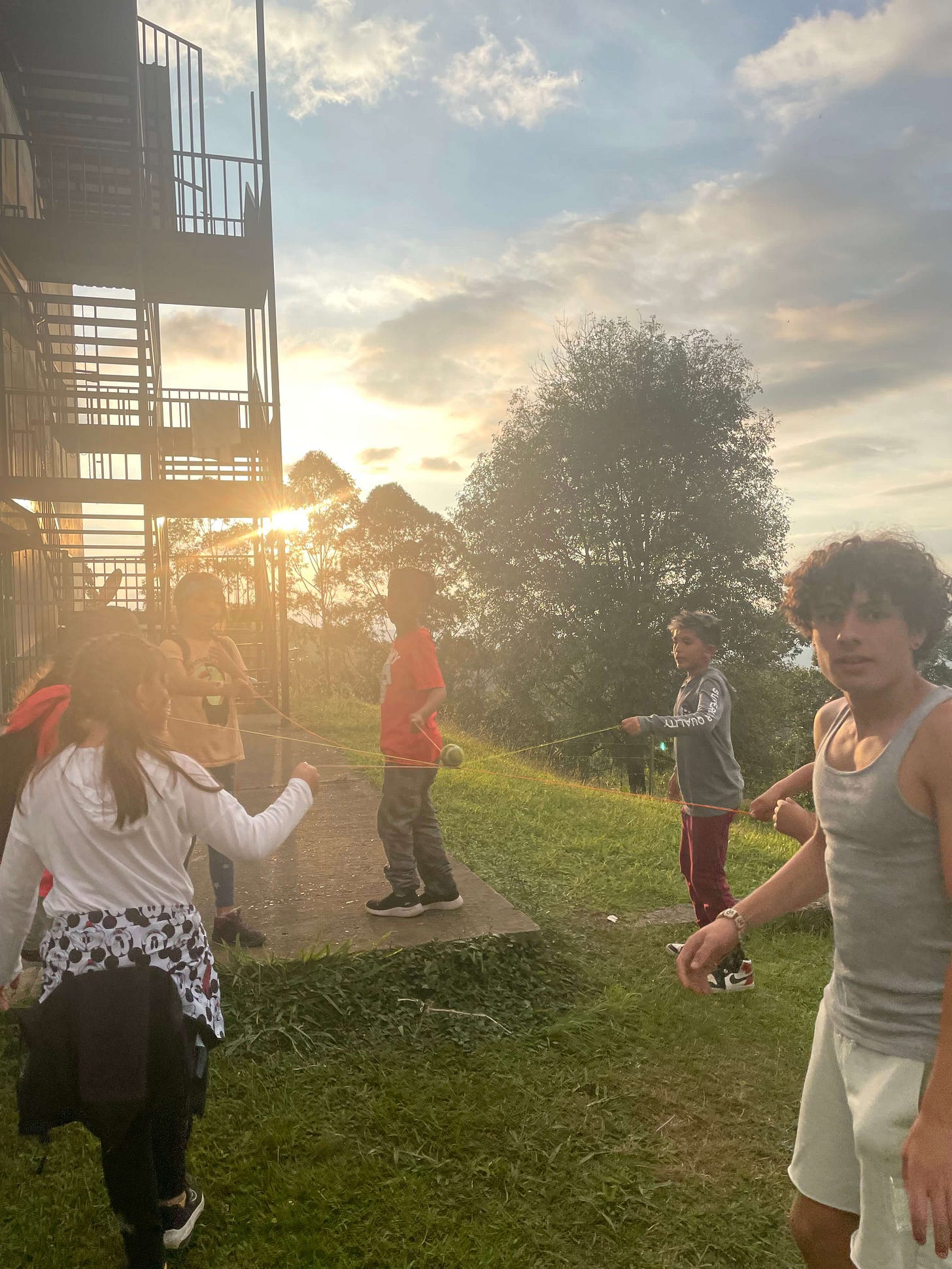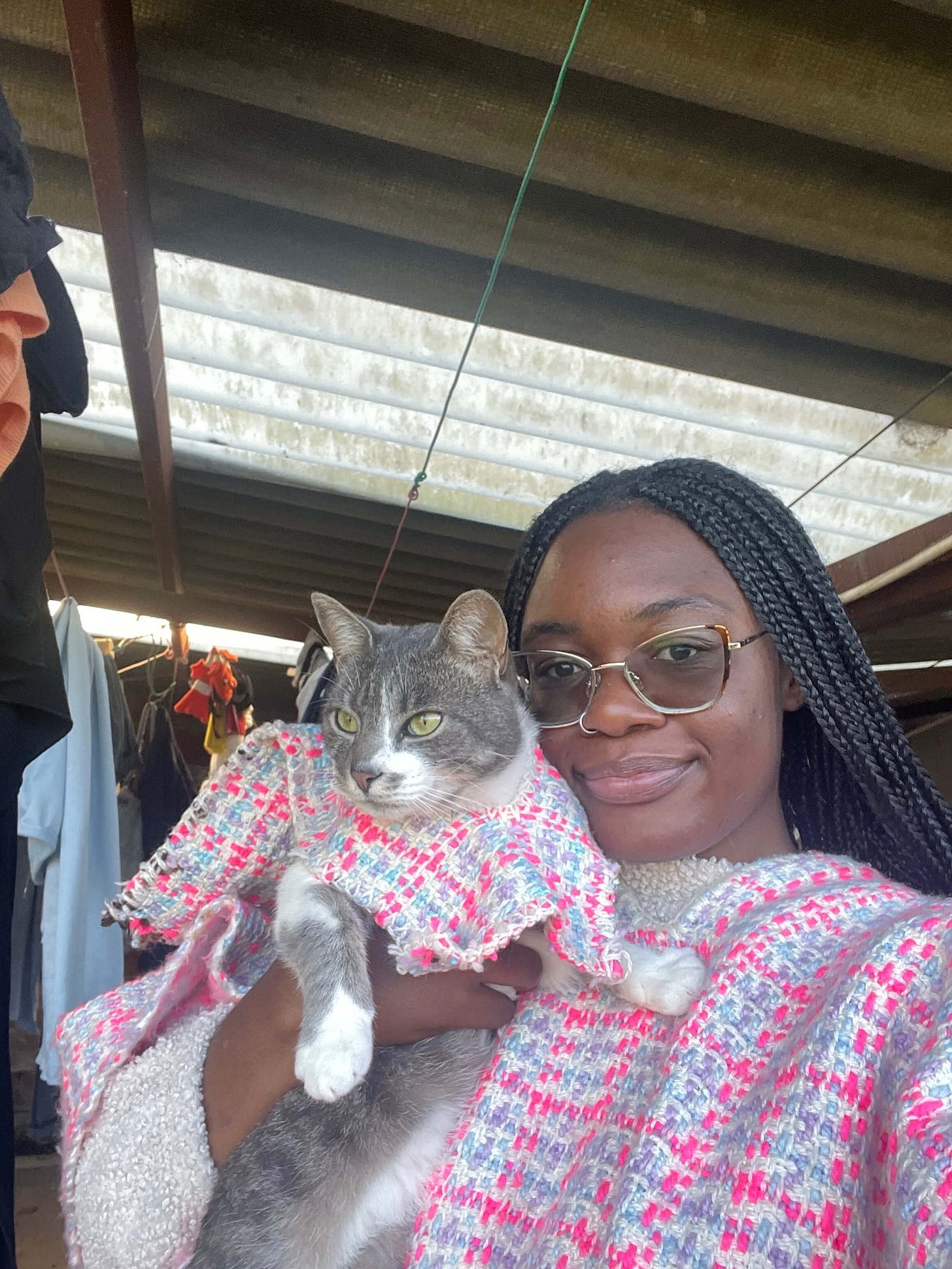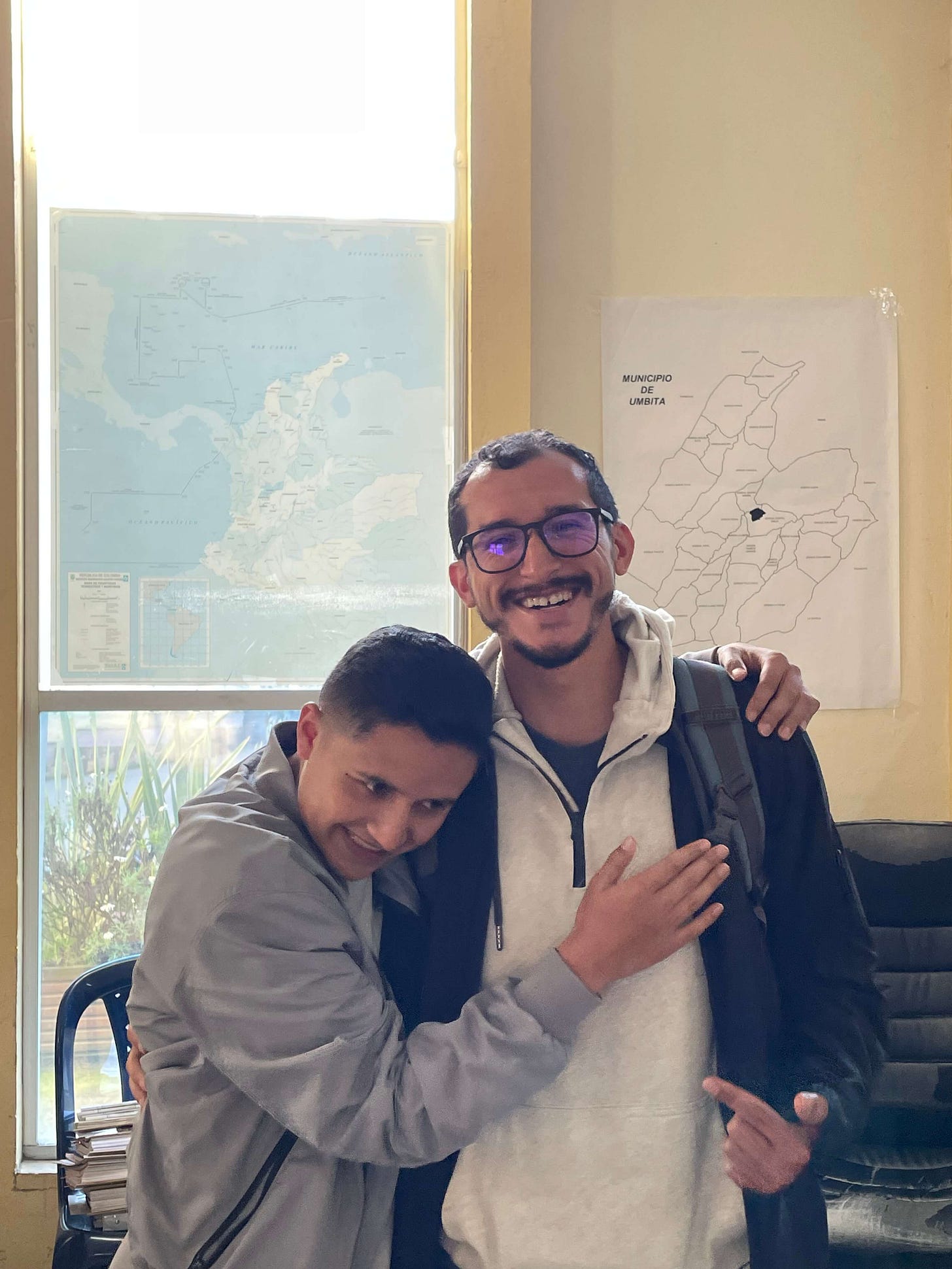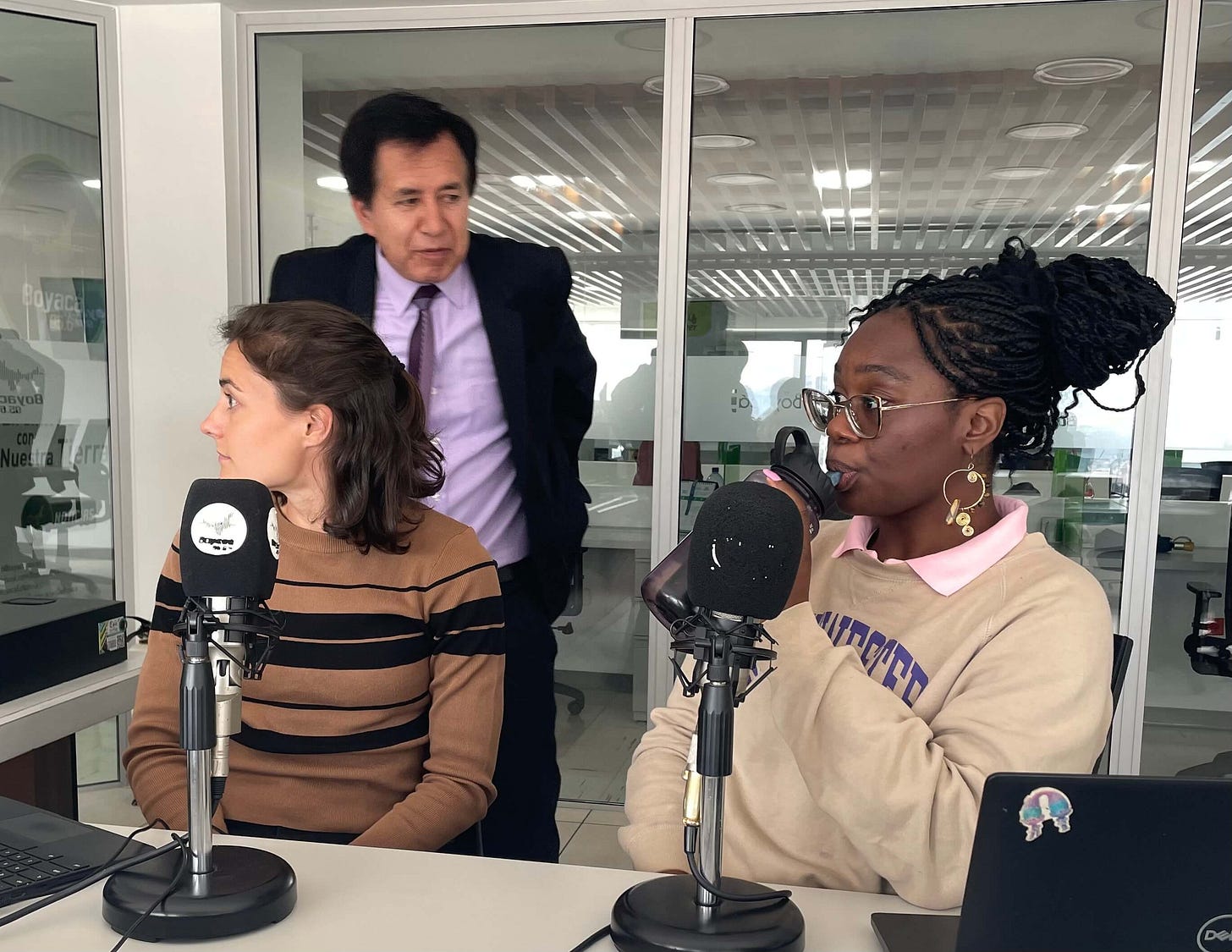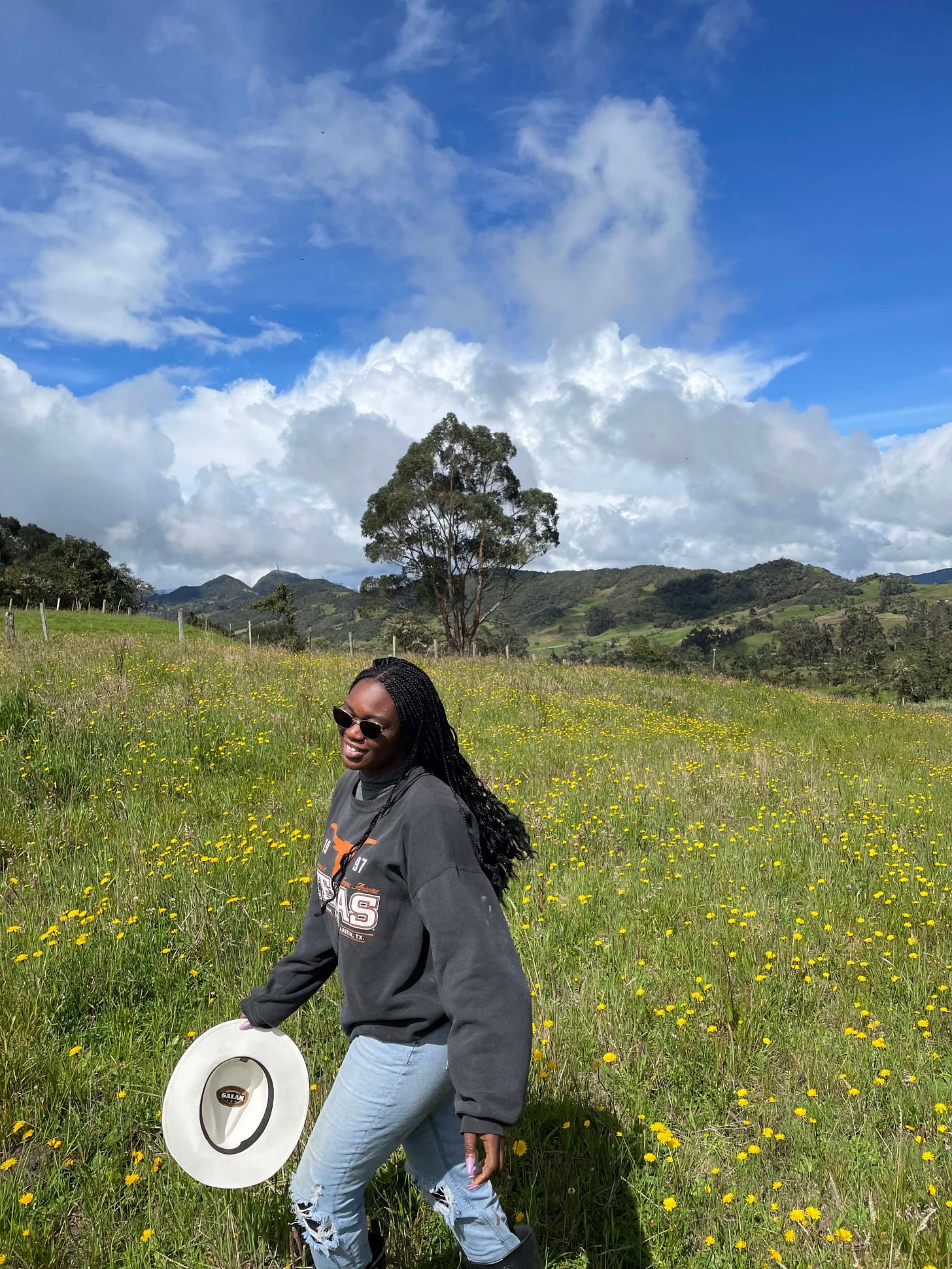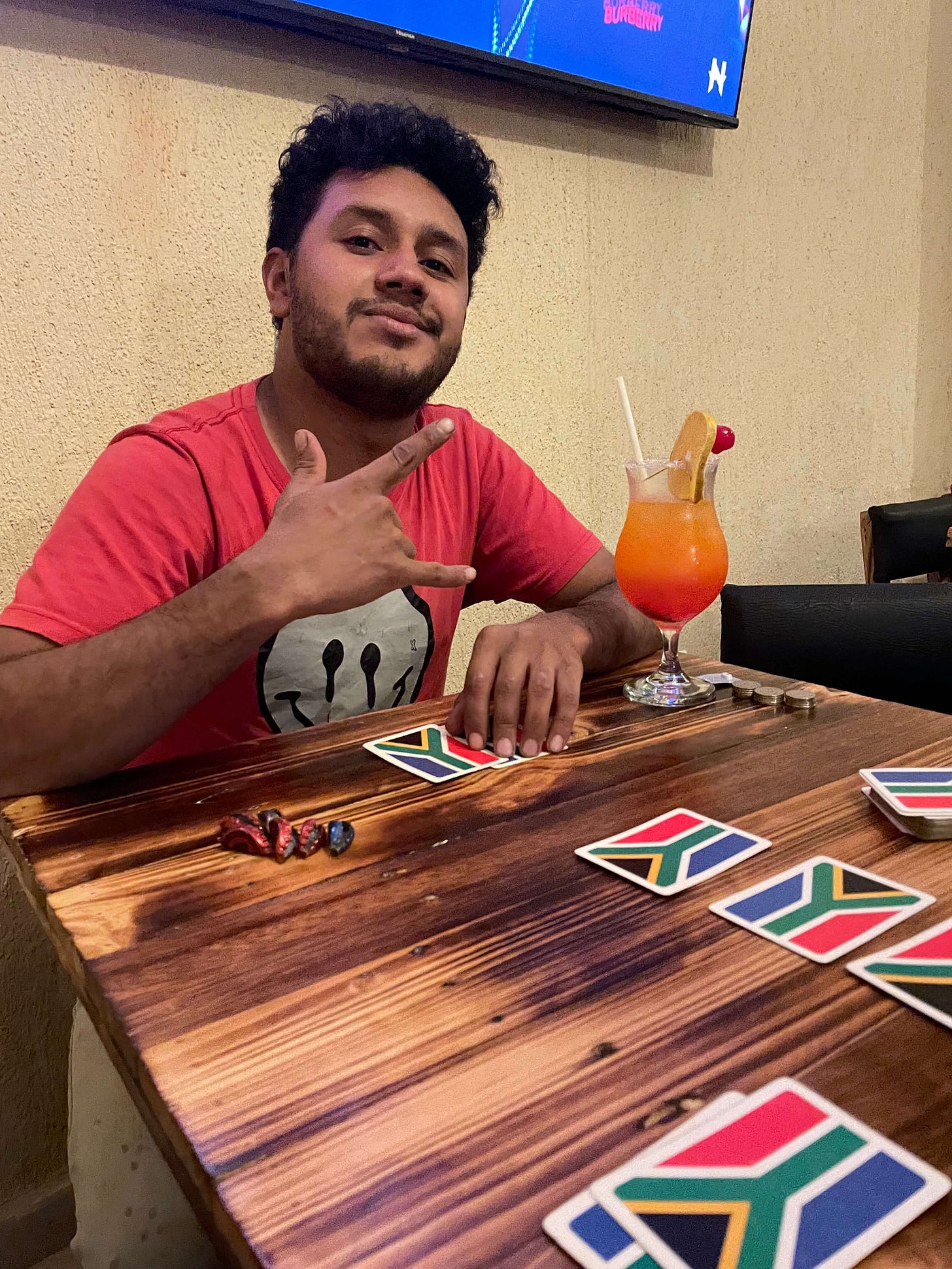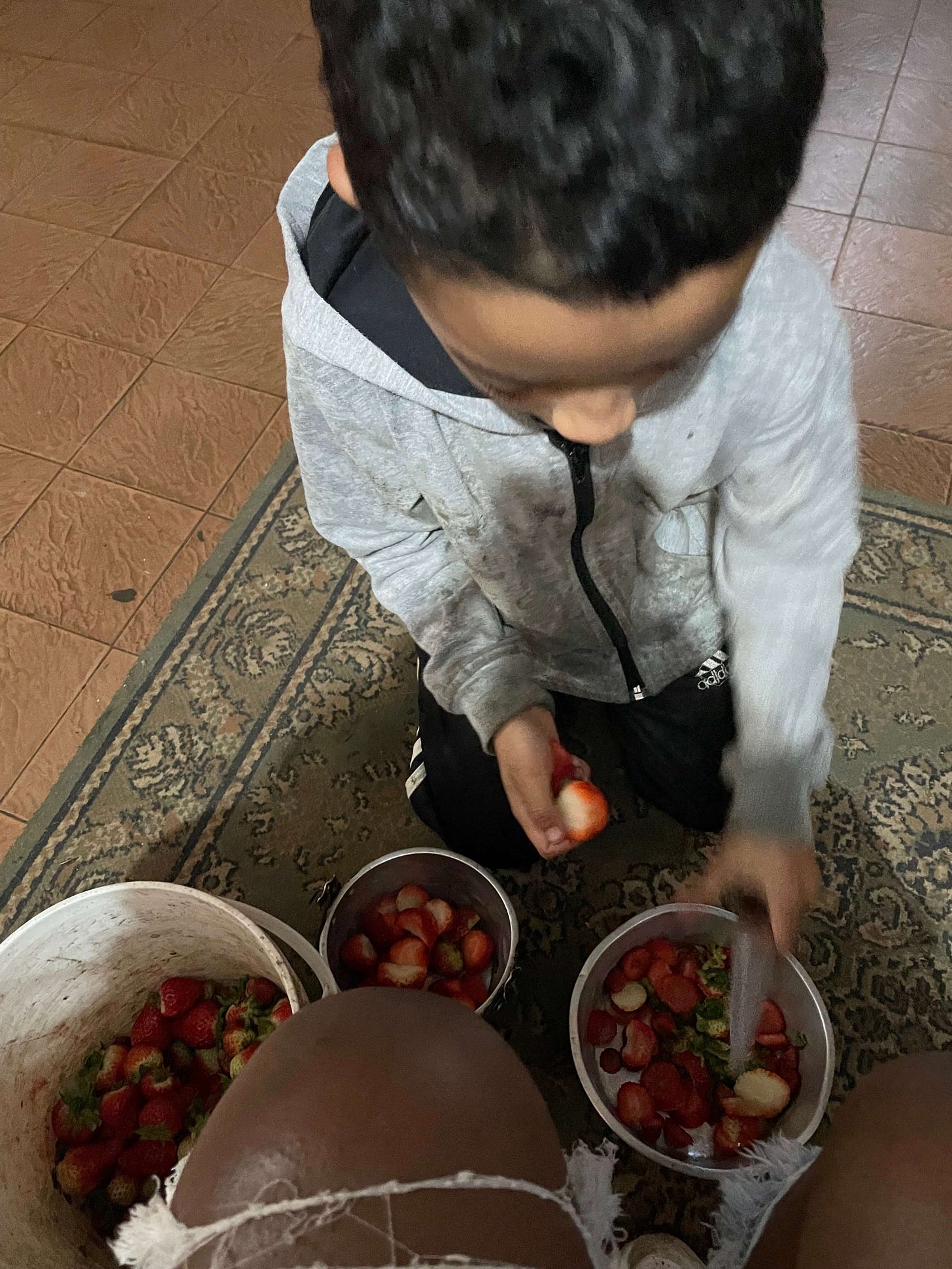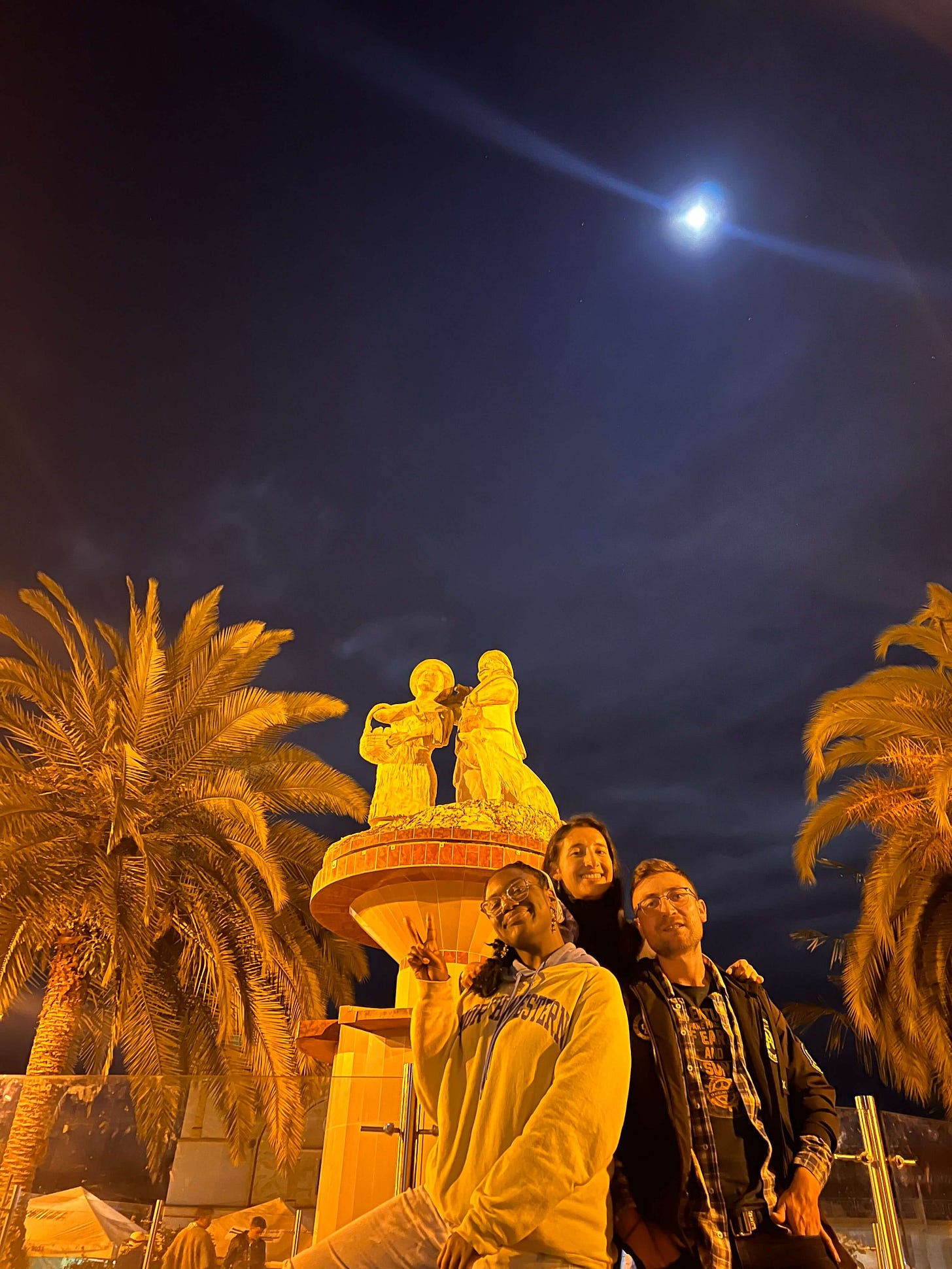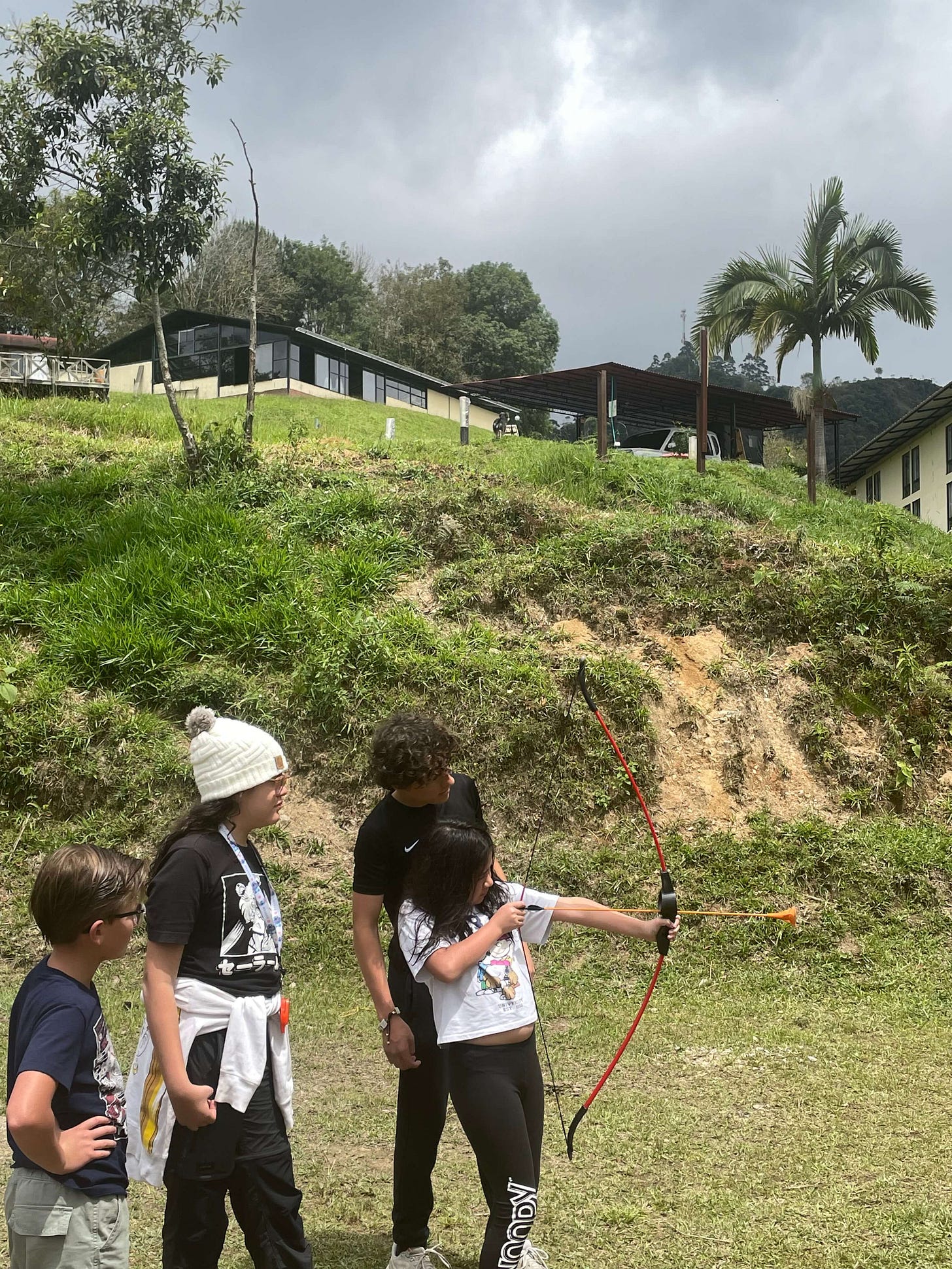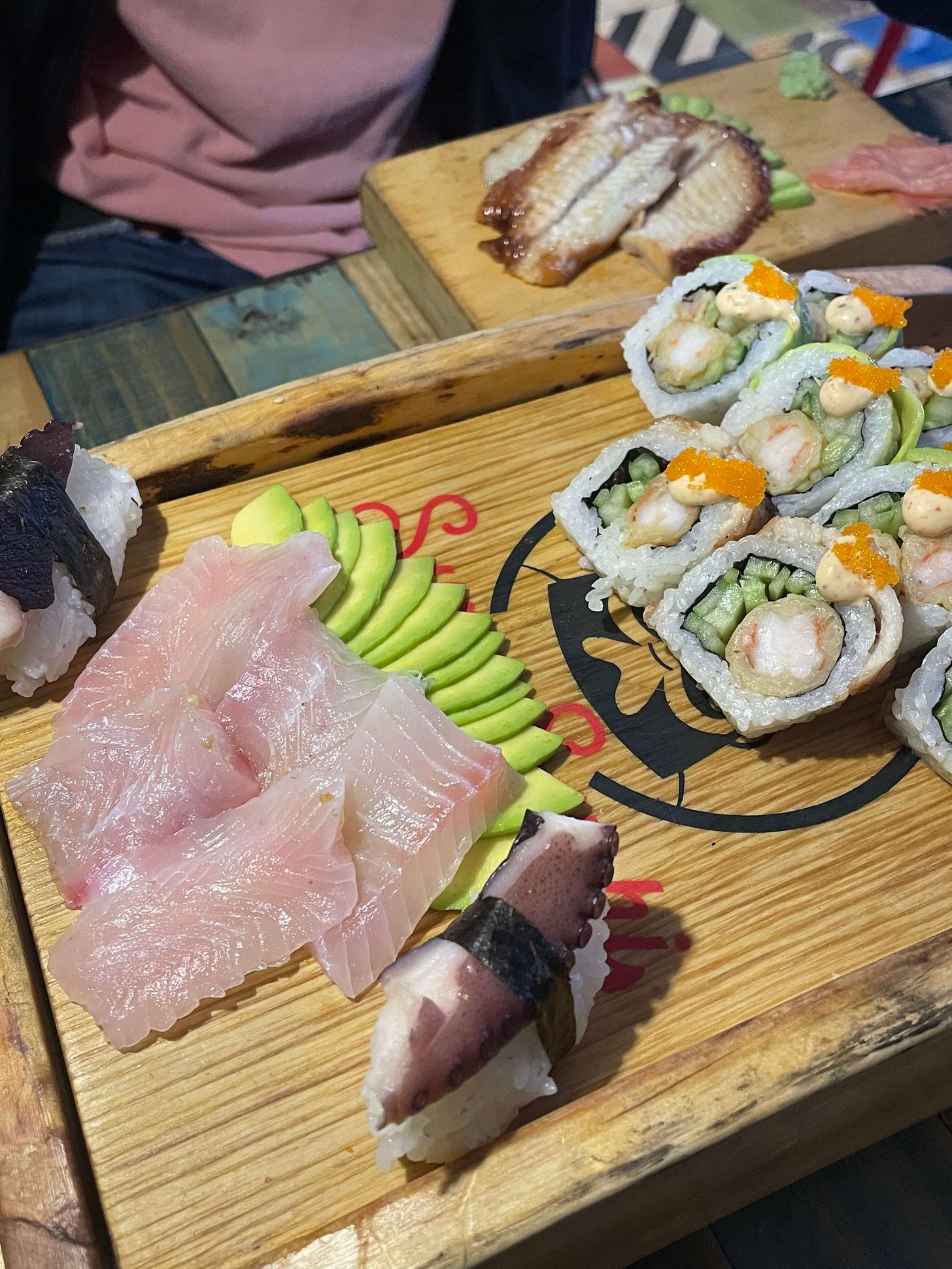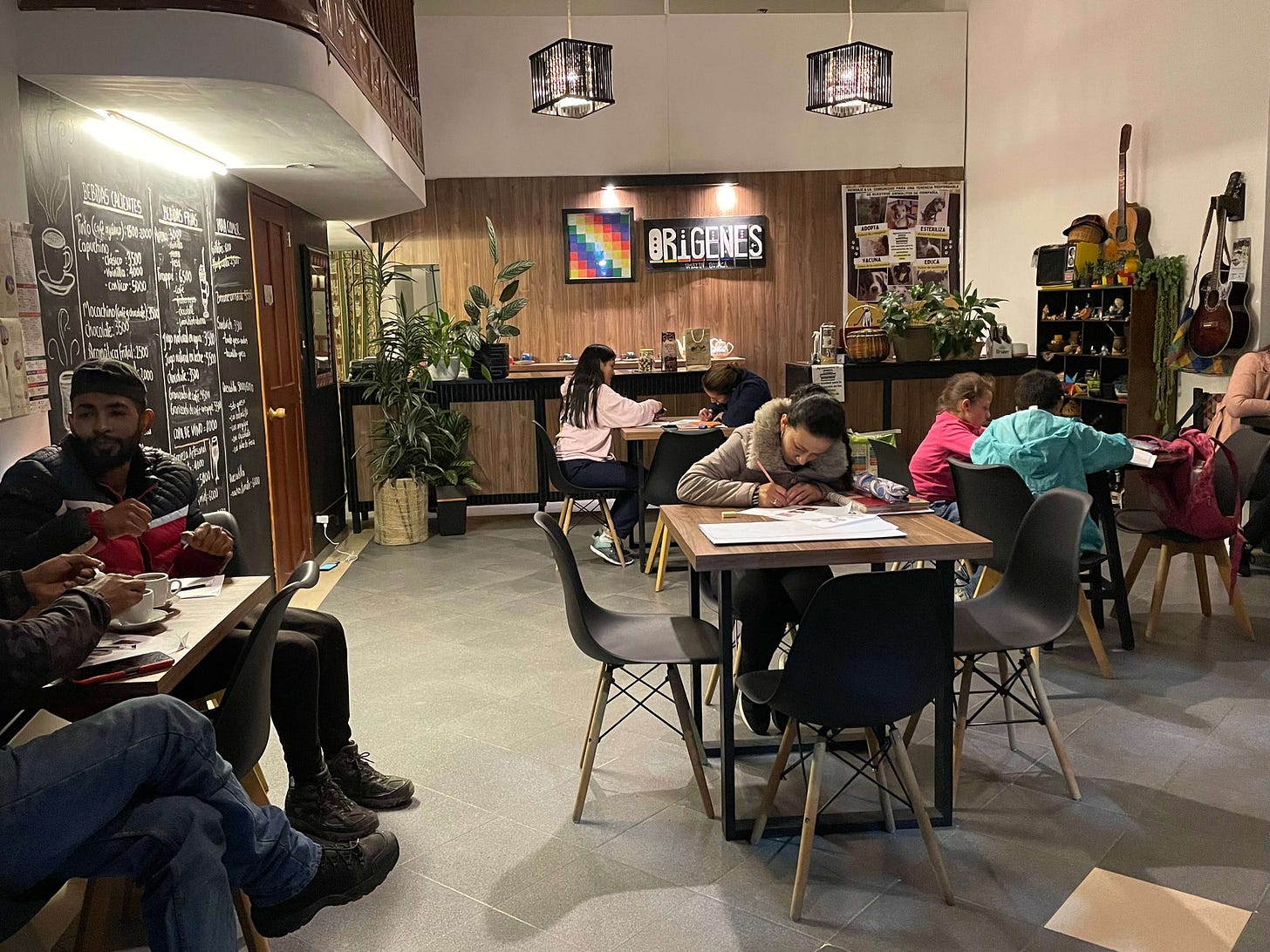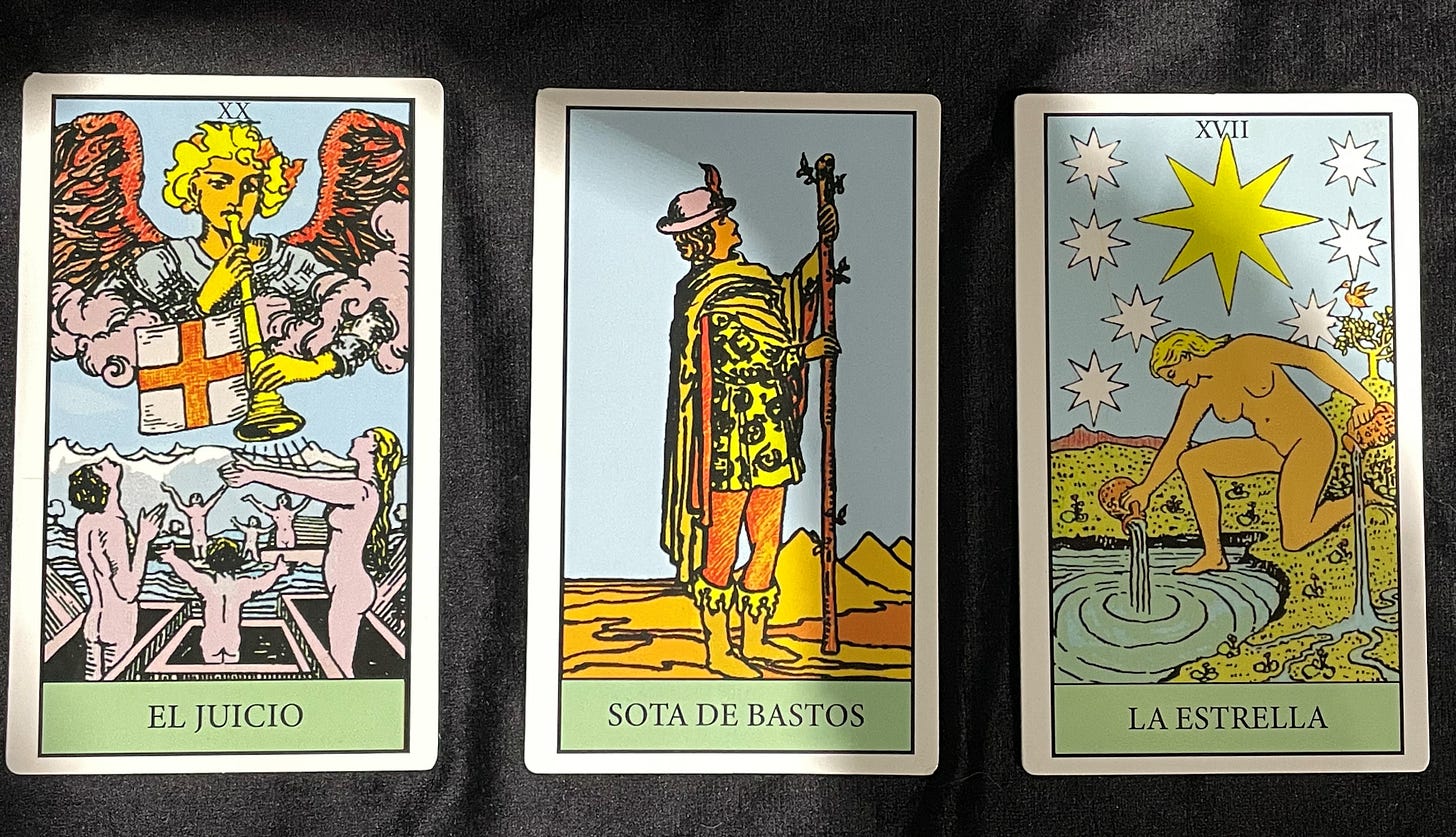[DISPATCH] the bitch is back
on witches and suitors, Medellín, and the one-year anniversary of my expedition
You and I both know this update is unforgivably late! To make up for it, I have a bunch of gossip and stories to share. Therefore, this is too long for e-mail. Click on the title to read this newsletter in full.
Medellín From The Right Direction
Medellín gets a bad rap. One might even describe the capital of Antioquia as a damned inferno. An easy scapegoat, it bears the stain of Pablo Escobar and his once-lucrative cocaine empire. When I told my host family that I was going to vacation there, they warned me against robberies, drug-peddlers, rape, and filth. I might as well have said I was going to Sodom during Holy Week.
Still, I continued with my plans (admittedly emboldened by the purchase of an anti-theft crossbody bag). Upon arrival, I immediately cursed myself. I decided that everyone who told me not to go to Medellín was right. Avoiding oft-prophesied parasitic taxi drivers, I planned to board a public bus from the airport and walk remaining distance to my AirBnB where Soledad and her son waited. What I thought was an easy 15-minute leg stretch turned into a sweaty two hours of arriving at several wrong addresses and blowing my daily budget on taxi fare. To top it all off, when I finally got to the right location, grey clouds dashed across the once clear, blue sky to flood the streets. I was cold, hungry, and irritated. Everyone thought I was an ignorant tourist, an easy mark to make money off — this cut me down bad considering I’d actively spent a year integrating into Colombian culture at that point.
We spent our first evening at Medellín’s equivalent of the MOMA and, briefly, a fuse was ignited within. An extremely collaborative and interactive place, the Museo de Moderna invites artist collectives from around the city to build exhibits and installations. Everyone in the interior, where I live, warned me that Paisanos (the term used to describe people from Colombia’s northwestern region — famous Paisanos include Karol G, J Balvin, Fernando Botero, Sebastian Yatra, J Balvin and basically any Colombian the everyman will recognize save for Sofia Vegara and Shakira who are both from Barranquilla in Atlántico) were rude and pretentious and stuck up. As it is, they’re merely creative homosexuals who thrive in excess. Youth gathered on the museum steps for picnics of cake and wine and vape pens, dogs and their owners danced salsa in the plaza, families strolled here and there, debating literature. It was a decidely European moment.
That night, the fire died dramatically. We spent the night in El Poblado. Founded in 1616 as the first Spanish settlement of Aburrá Valley, El Poblado spent much of its history as an impoverished, marginalized town where Indigenous Colombians were expected to live apart from European settlers. During the start of the 20th century, primarily due to the wealthy’s apparently centuries-long “vacation house” mentality, it transformed into Medellín’s economic center. Don’t expect to spend anything less than 25 mil on a beer in El Poblado. (For context, a beer is normally two thousand Colombian pesos and even the most fiendish of tourist-trappers wouldn’t be able to sell one for more than ten.) Too occupied with being bitter about the city’s high partying price point, I initially failed to recognize that the promise of sex was being sold to me. It wasn’t outright prostitution, but there were pimps (club promoters) and their whores (waitresses) at every corner. Everywhere we went, we were promised a free shot (other promises included Chicha, lap dances and hookah) if we would only come inside. Once seated in the nearly empty (save for sweet smoke and neon lights) club, a waitress with a halter top three sizes too small — worn, naturally, to emphasize well-developed breasts — and glittery shorts that left no room for imagination would bring us a menu. For us, the interaction ended there as we couldn’t afford a single thing and were counting on free alcohol. However, for rich tourists, a couple of drinks guaranteed the company of one of these heavily made-up waitresses. A bottle earned flirting, heavy petting, and grinding. All parties involved would do and say anything to get people to stay as long and spend as much as possible. I watched all this from afar, initially pondering how these men didn’t realize they were being played. Maybe they did and they simply didn’t care. I considered the waitresses. Did they sign up for these roles already having known that, night after night, they would be expected to take advantage of the world’s natural instinct to sexualize them? Was this their only option? Did they consider themselves sex workers? Did they consider themselves empowered? Were they unionized? I left with a rancid taste in my mouth. Despite the city’s reputation, Colombians are firm that Medellín has come far from its violent history. How is that measured though? What is valued more: the body or the soul? I theorized Medellín as a city molded by vices, its greed-based culture having traded the primary trade of exploiting natural resources for exploiting the body. In the middle of all this, there are Venezuelan refugees lining the streets. They’re all adorned with the same frowns and bright, patterned dresses. The mothers silently stare at clubbers, belligerent and loud, as their children wail. My hyperfocus on Medellin’s dependency on exploitation continued the next day with our trip to Piedra del Peñol outside of Guatapé when I learned that one of the most beautiful views in Colombia is privately owned by a family who had an ancestor smart enough to scale the nearly 700-foot tall stone and build stairs for easy access in 1954. (The Colombian government declared it a national monument a decade prior and made it illegal to deface it.) Every day, more than 1,000 people climb Piedra del Peñol, generating more than 20 million Colombian pesos a day for the Villegas clan. This excludes income from the various restaurants, photo opportunities, hotels, and helicopter rides they have operating in the area. Safe to say that they’re one of the country’s richest dynasties.
The next day, we visited the Pablo Escobar museum (note that there are several Escobar experiences in Medellín and only one is “worth it” because you get to meet the brains behind the operation, Escobar’s brother, Don Roberto) and spent several hours squirming with guilt and conflicting energy afterward. Colombia’s history and its people’s opinions concerning Escobar are complicated. There are some who deign him a national hero, an anti-fasicst government rebel who capitalized on Colombia’s natural resources and gave back to the poor. Others spit on his name and blame him for everything that’s wrong with Colombia today. Both contain elements of the truth. We stuffed ourselves in secret crawl spaces, observed bullet holes in the front door left behind after a kidnapping attempt from less than a decade prior (remember that Escobar was murdered by Colombian National Police forces in 1993), and commented on some really egregious photoshop work. As custom demands, I noted every interesting bit of history in my pocketbook. Halfway through the tour (brief and extremely subjective), our guide asked what and why I was writing. The fact that I found it engaging and wanted to remember to follow up on certain plot points wasn’t sufficient. She said she would permit me to continue but that I absolutely could not do it when her boss (Claudia, third wife to Don Roberto and former beauty pageant queen) was around. We were permitted one picture with Don Roberto toward the end before immediately being ushered to the gift shop where they sold an 1,000-page book of comics that Escobar collected, bound together, and printed to give to his inner circle for nearly 400 dollars. Blind in one eye and nearly deaf, I doubt the main-selling point of this operation has any idea what’s going on yet they parade him around like a Macy’s Day Thanksgiving inflatable. I left with the impenetrable feeling that we shouldn’t have gone. (I also left feeling like I landed myself on a watch list as I idiotically took pictures of the sweet puppies — note, war-trained guard dogs — at the entrance.)
This was Medellín from the wrong direction.
I’m not completely sure when it happened. One second I was hateful and counting down the seconds until I could board my return flight. The next I was researching apartments in Medellin and planning several return trips. It might have been our tour of Comuna 13, a historical neighborhood located in the city’s mountainous outskirts and the second-biggest fabella (ghetto) in South America.
I can’t overstate this fact: This tour was the best I've ever experienced in my entire life. Our guide, Julio, was so informative and passionate and helped contextualize the area in an extremely enriching way. It felt as necessary for me, someone who had no clue what Comuna 13 was before arriving in Medellin, as it could for someone who grew up hearing stories about the area. I thought I wasted money for a guided walk around a pretty neighborhood. Instead, we received a rich, detailed narrative of how the district evolved from war-torn, government-occupied drug center (I especially want to highlight the contextualization of its violent history in a way that didn’t demonize its citizens for decisions that contributed to said history) to economically prosperous hub known for its artists and culture.
Julio, who grew up in Comuna 13 and ran into someone he knew every three seconds, explained that Medellín is one of the most overcrowded cities in Latin America. In Comuna 13 alone, there are over 200,000 people living. A feat that took 15 years to populate the regions surrounding it with shelters. Historically, there were three options for children growing up in this mountainous countryside: tending the home, inaccessible factory jobs because of education requirements, and joining guerilla forces — these are self-organized mercenary groups initially inspired by the sentiments of the Black Panther Party. Children often go with that last option. Throughout the early 80s, several Guerrilla extremist groups like ELN and FARQ — from the Communist left — occupied the area. This invited the arrival of paramilitaries from the extreme right. Armed collisions rendered the neighborhood inaccessible and violent for nearly three decades. In the early 2000s, the Colombian government launched an earnest effort to battle guerrilla warriors in Comuna 13. They promised everything but the world to military officials who achieved high body counts, the idea being that carelessly shooting at Comuna 13 and hoping a bullet landed would eventually reduce the number of guerrillas. This incentivized soldiers to kill vulnerable civilians without discernment. These are referred to as “false positives” — in other words, members of the Colombian military killed non-armed residents of the area and justified it by saying they were members of the guerilla militia. In one mass grave, more than 500 children with learning disabilities were found dead, having been labeled drug pushers and blood-thirsty killers. Julio left us with this fact: Every house in Comuna 13 is waiting for one person to come home. Every person in Comuna 13 is waiting for an apology from the Colombian government.
Even with all this heavy context, the tour remained hopeful and future-facing throughout. We toured a gallery featuring art from people in the community. We ran up the Amazon-sponsored escalators with beers in hand. We nibbled on ice cream and watched break dancers defy gravity. We ended at a rooftop bar, watching city lights twinkle from above. Reggaetón floated through cool night air as we sat in a moment of reflection. I began to appreciate how hard far Medellin had come. How much effort had been put toward the construction of something beautiful. We went on a pub crawl in El Poblado’s actual party neighborhood (the sex tourism one I mentioned before is only frequented by tourists, not locals, which contributes to its evil energy). We noticed its phenomenal urban infrastructure and researched politicians’ sustained investment in public transportation. We planted trees and swam in cool springs.
This was Medellín from the right direction.
Herein lies the appeal of Medellín. Unlike Bogotá, a city that plays dress up at being am urban utopia by haphazardly invoking France, Spain, Bangkok, New York, and Los Angeles depending on the hour, Medellín is concretely defined. It’s a Phoenix city, reborn from blood, fortified by resilience. It is a contradiction, constantly shapeshifting and redefining itself. A transplant could spend a century trying to learn from and understand Medellin and still miss something. But here’s what I know after a week there: Medellín is a must for any travel lover, urban planning enthusiast, history buff, hater of imperialism, art hoe, and foodie.

Me and My Coven
Along with potatoes, cycling and excessive beer consumption, my town is famous for its witches. There’s an abundance of them as I’ve recently learned. And the most powerful witch — officially known as the woman awarded the grand prize of witchery — in Colombia was born in Jupal, a vereda thirty minutes from my house. She’s two generations removed from me, so Dani’s grandmother served as a conduit of information — whether chisme or fact — about her, Griselda, and her lesser-involved sister, Antonia. Theirs was a love ministry, one in which local women received spells and potions to bewitch one-sided conquests or curse unfaithful lovers. Outside of this, I couldn’t garner much more information because of the thin line between celebratory nosiness and inappropriate, devil worshipping interest. Either way, the main point is that even though she’s been dead for three years, Griselda’s name and memory are still constantly invoked.
When I was a child, I wanted nothing more than to have a sibling to play with. When I started getting ready for school with TNT reruns of Charmed, that desire evolved into one where I wanted to surround myself with powerful, bold women. A witch is a revered thing. Feared, discussed in whispers and furtive glances. Mystery and false interpretation prove to be the main appeal of discussing witches, but when you really investigate what a witch is and what she stands for, they’re quite positive role models. It should be a surprise to no one that I believe all women should be witches. At least, encourage the most feral parts of themselves to access an inner, untouchable source of power. If it’s a challenge to connect with what we’re taught we shouldn’t and become the most evolved versions of ourselves, imagine how difficult it is to find others who dare to be so brave.
In Colombia of all places, I’ve found sister witches. I had a feeling that they were the ones the first night we went out for beer when, on a whim, they ate the first man brave enough to approach us alive. Quickly, we fell into friendship. Our conversations are long, winding roads with no destination. We discuss polyamory with the same ease we discuss expressionism. We argue about the existence of empathy. I host lectures on Janet Jackson under the full moon and they listen with rapt attention. We consume gelatin and watch gothic films. We howl at the full moon. We’re constantly searching for potatoes. Once I let it slip that I read cards, they were ravenous. That first night, we didn’t have time for individual readings, so I offered the question of what our individual spirits contribute to our group dynamic. Under the silence of darkness, we chose cards one by one from oldest to youngest.
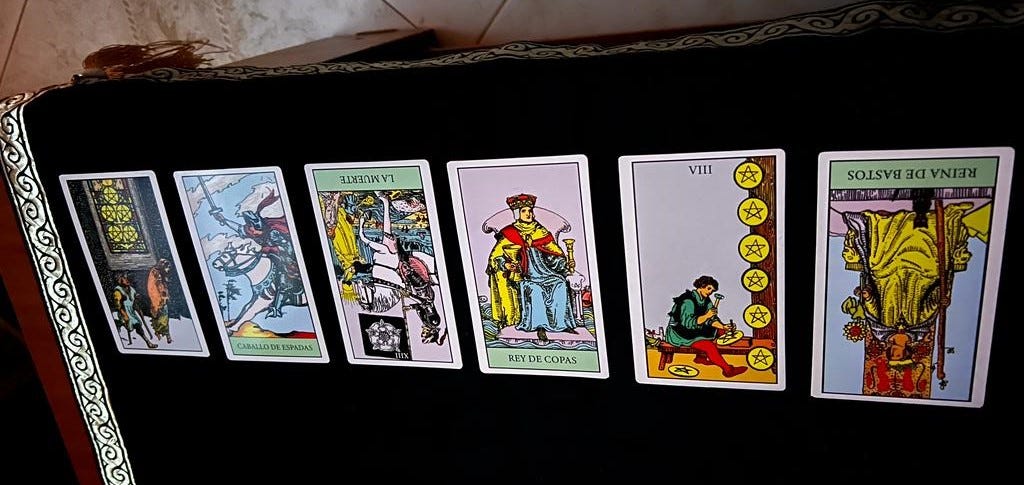
Mateo had the Five of Pentacles. It’s a card of loss — whether emotional or financial. However, as a Minor Arcana, it represents a temporary loss. The two people trudging through the cold feel isolated and suffer from a hyper-fixation of what they lack or what they feel they might lose. The light in the window behind them reveals that help is near, available to those that ask. In response to this, as a group, we need to be his reminder of sustainable communal support. We have to help redirect Mateo’s focus so that his powers of manifestations can result in something positive.
Julian was the Knight of Swords. This knight charges into battle, his high-held sword represents a dedication to his purpose while his white horse represents the purity of intellectual drive that inspires him. He is ambitious and action-oriented and will let nothing get in the way of achieving his goals. Julian is an assertive leader that thrives on chaotic energy. He’s always on the move, bringing us along for the ride on whatever barely thought-out plan he concocted earlier that day. (Case in point: his decision to attend a beekeeping class without a suit, resulting in ten bee stings. He wasn’t sure whether he was allergic.) In response to this, as a group, we have to think ahead for him and assist with execution. Additionally, we have to slow him down as needed
Angelica chose Death, reversed. This one scared everyone in the room until I explained that the Death card is a discussion about transformation and cycles more than anything. Most fear Death as it traditionally represents an end. However, flowers wilt in winter only bloom again in spring. A reversed Death reveals that the querent is on the verge of meaningful change, experiencing an internal purge where they are releasing what no longer serves them to make room for new growth. It’s an opportunity to embrace change. For Angelica specifically, the card represents her gradual transition from her old group of friends to our coven and a chance to evaluate habits and thought processes that she settled into with them.
Yeison, the King of Cups. He who has mastered the realms of emotion, creativity and the unconscious. He is compassionate and creates strong relationships based on his balance of execution and heart. Where Julian is an action-oriented leader, Yeison is our leader of counsel. He remains calm in turbulent conditions, always cutting through our chaotic drunkenly-charged energy and guiding us to the promised land (dancing and laughing until the sun rises). He takes in our emotions and navigates them with his own emotional maturity.
For me, the Eight of Pentacles. There, a young apprentice toils at his task, working toward mastery. It is a card of repetition and development of new skills. This one was very easy to interpret. I changed my entire career and met my coven through dedicating myself to a budding area of expertise. They encourage me to continue with the uncomfortable sensation of learning new things as a reminder of what it brings me.
And my sweet Dani, the Queen of Wands, also reversed. She is a courageous nucleus, someone who everyone is drawn to. We cluster around her energy, each of us creating a unique bond with her before identifying common bonds to bring the network together. The Queen is a reminder to own that inner power and unleash it on the word. In the reversed position, The Queen of Wands signifies that the querent has reached a place of clarity in regard to self-respect and personal beliefs. This person has defined themselves for themselves and others’ opinions can not easily move them. Dani once told me that she never thought she could find friends like us in her small, conservative town. My dance teacher recently informed me of the Spanish dicho pueblo chico, infierno grande and I imagine how, after decades of constant surveillance and cultural conformity, we as potato-loving menaces must seem like breaths of fresh air. My teaching may be the thing we all had in common, but Dani’s determination to connect made our bonds permanent. We bring out her fiercest, most honest self and in return she empowers us with confidence to follow in her footsteps.
Even though Damaris couldn’t be with us that night, I know she’s the Queen of Pentacles. A mother by accident, she’s a nurturer by nature. She’s the ultimate parent, to both us and her own son. She’s rich in chickens and love. She’s the most supportive and caring person I know and has found divine alignment between her realms as party girl and responsible parent.
Another Visual Diary
Life has been extremely vibrant and cinematic and in this section, I present you with the evidence.
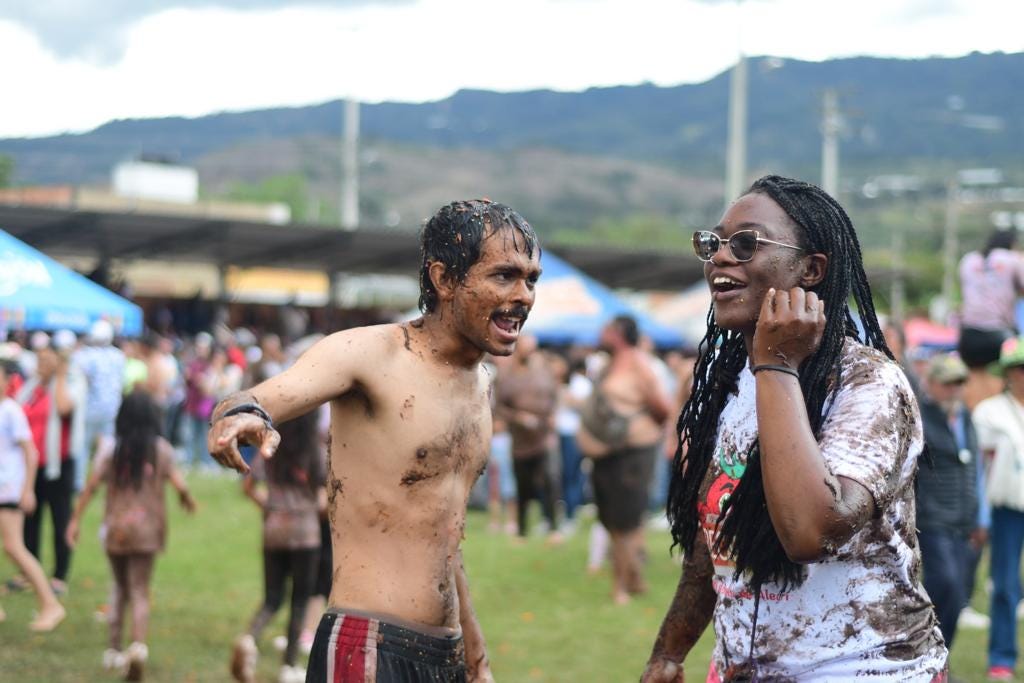

Me and My Brothel
In April, I got my hair done for the first time in a year. (Some readers may ask why the Keratin treatment I broke the bank for from September doesn’t count and the answer is simply that the damage it did to my hair — a once-gorgeous, shoulder-length result of five long, patient years after shaving my head in Shanghai — more than outweighed its three weeks of glamor.) In the salon, a space packed with beautiful, fast-gossiping Afro-Colombian women of all shades, I debated, as I always do, on getting an outrageous, never-done-before style that would more likely than not intimidate the people in my small conservative town for exactly fifteen minutes before asking for my usual: chest-length box braids in 1B. To appease my more daring nature, I asked for the ends to be curled as I’ve never done it before. The braiding process — which excluded a two-hour wait after my bus broke down and four hours of travel followed by another three-hour wait because I arrived 45 minutes late — cost me two hours and 200 thousand Colombian pesos ($45). I continued the splurge spree with lavender champagne acrylic nails and matching toes, a new experience that set me back 350 thousand Colombian pesos ($75) and the entirety of John Wick 4.
For various reasons, I resigned myself to celibacy upon my move to Colombia. One: being tall and Black restricts the dating pool to perverts and fetishists, typically of the ancient variety. Two: my organization provided a significant amount of training sessions steeped in slut shaming rhetoric which brings me to three: the chisme. Four: Colombian men are deeply unserious and Colombian women are extremely not my type. Five as it builds on four: I had aspirations of the next person in my life being my spouse, eventually to become a parent to my children. Thus, I relinquished self-importance and removed myself from the realm of desire. After embracing my most humble nature by rotating between four pairs of pants and five sweaters for a year, you can only imagine how much I was feeling myself. Even on my least confident days, I’m naturally bewitching — the smile does most of the heavy lifting. After my day of beauty, not a single mirror was safe from my reign of terror. Much less man.
When I returned to my town, I was a conductor of sin. With the briefest of eye contact, the lightning bolt of male desire electrified every space I entered. It was harmless and it was suffocating. It was exhilarating and it was infuriating. I was cat and I was mouse and then I was struck down. When the dust settled (I broke a nail), three suitors emerged at the top of the heap (I trimmed the roster because someone reminded me I shouldn’t shit where I eat) and I had to mind a proposal (I was asked to become a girlfriend).
This threat to my already wildly successful hot girl summer was not to be taken lightly. I drafted a pros and cons presentation to present to the high councils. I meditated. I asked questions. I watched rom coms. I tried to listen to my intuition over my loud, disorganized brain. Eventually, I turned to the cards.
I will start by saying this spread sent me into an hours-long mute holding cell of anxiety. I pulled a card for each of my suitors, hoping for insight into what each relationship would offer.
The top contender received Judgement. Here, Gabriel blows his horn, calling the people forth to hear God’s decision on whether they will be received into Heaven. The card represents a purging process; In order to receive absolution, you must evaluate all experiences of your past that have led you to this moment. The pieces of your life’s puzzle have all come together at this moment to present an integrated picture, one that reveals the bigger picture. Judgment calls the querent to rise to a higher level of consciousness in service of their highest good. In a romantic context, this card tells me that the relationship will be a summative test. I win or fail based on what I’ve learned and no matter how the relationship ends, it will represent a significant, life-changing stage for my romantic endeavors. To me, this card also promises a karmic relationship, the return of someone from a different life where things were left unresolved.
Next, the, too-on-the-nose, Page of Wands. The page is a young man in search of adventure. In my case, a jealous 22-year-old who wants to move his trade to Canada. An inflexible youth, he has an obsessive, one-track mind. His sprouting staff is firmly planted on the ground, suggesting that he has not yet taken action on his abundant potential. He’s in search of a mentor, someone older and wiser to guide him in a forthcoming spiritual journey. This is a relationship that could go somewhere but would likely be one-sided in terms of emotional fulfillment and growth. In short, I would be a sexy babysitter for a possessive toddler.
Finally, for my longest, one-sided delusionalship, The Star. In its purest sense, this card is a blessing from the universe. After a period of destruction and turmoil, the presence of The Star — a celestial guide for the woman kneeling before the pond in tune with her conscious and subconscious, logic and intuition — represents renewed hope. It is a sign that transformation is on the way and that anything is possible but you have to relinquish what holds you back. It’s a recommendation to reconnect with our core essence. When I pulled this card, I assumed it was too good to be true. I have a tendency to get ahead of myself and romanticize people until they pale in comparison to the version of them I have in my head. This card also signifies wishing on a falling star, idealism, and dreaming. With that context, I feel warned that the future I imagine with this person is nothing but a blissful imagination.
In the end, I went on a long trip and received an answer.
My Year of Interest and Integration
I remember the day I left Chicago very clearly. A soft hailstorm gave me away. Jon made me breakfast tacos with pickled veggies and R had matcha — made with a ridiculously high percentage of sugar I loved then but would probably fall into a coma if I drank today — ready for the ride to the airport. We timed the journey so that the 10-minute version of “All Too Well” accompanied us for our last moments together. I laughed as everyone cried. I don’t remember two days later, when I left the United States altogether, as well. I’m sure I was nervous and barely awake. What I do remember is that Lorenzo and I discussed The Northman and then Maida, correctly, suggested that we dive into the sea as the sun set. Every day since has been a blur — a series of bright moments muddled with varying shades of gray. When I meet new people, one of the first questions I receive is, “How long have you been in Colombia?” I’ve long struggled with the calculations, faithfully failing to understand whether the full moon count Soledad offers every month is one less or one more than our accumulated time of service. Panicked, I used to offer an uncertain reply of, “Hm, maybe about six months? Seven months? A long time!” However, as the 24th of April neared closer, I found myself with a laser focus. “A year. Well, eleven months and twenty-two days,” then, “twenty-one days,” then, “twenty days and six hours and forty minutes. Bueno, mejor dicho, casi un año.”
When the anniversary of my expedition finally arrived, it was a day like any other. I taught my classes, got caught in the rain, communed with a chocolate-spotted calf and sang my heart out to Gotye’s “Somebody I Used To Know” with my coven. A few days later, I hosted a graduation party for my first group of adult students. Ever. Even though preparation occupied me for a week — nine pounds of pizza dough, enough tomato sauce to fill the Nile, several explosions of homemade ginger beer — someone surprised me with a word of congratulations. It came from one of my students’ children as he printed out the class’s diplomas. I, a native speaker of English who hadn’t graduated or spent the previous six months trying to graduate, was beyond confused. My face must have betrayed me, as it usually does, because he went on to explain: “You’ve completed your first project here. You should be proud of yourself. You’ve dedicated so much time to these people, especially my mom, and did a good thing for them.” Surprisingly, I didn’t cry. Instead, the compliment made me pensive. If someone told me a year ago that I’d laugh until I cried while teaching the Cha Cha slide to a bunch of Colombians, I would’ve snorted.
Another life appeared to me. Had I stayed in Chicago, I probably would’ve been laid-off from NPR with the other 10% of the company — this number includes my brilliant friend Marissa Lorusso who wrote an equally brilliant piece on boygenius’ debut studio album and the entirety of Louder Than A Riot’s production team, both terrible decisions, terrible moves. I could’ve been a wife by now or, alternatively, had yet another relapse with a demonic ex. I might have had to take sides in a division where loved ones are largely indifferent toward each other. What I know without a doubt is that I would be less stimulated than I am now.
I’ve developed a lust for life that scares me. I’ll do anything once and Colombia is an enabler of repeat risks. I’ve had a million new experiences since moving. I believed the fountain of novelty would dry up after a year, but a constant refrain of the past few months has been, “I can’t believe this is happening to me.” I seduced the town butcher. I got twenty Colombians black-out in under two hours. I woke up in a sex motel — and didn’t use the hot tub! I saw el ballet de La Bella Durmiente (gorgeous but unnecessarily transphobic) only to learn that the Maleficent I know and lust after is but an invention of Walt Disney. I cosplayed Republicanism by attending a day of races at the Colombian equivalent of NASCAR. I became a nasty exile to a horde of people simply by prompting them to consider their relationship to race. I ziplined at camp! I was a camp counselor! I sang “This is a repeat after me song” songs around a bonfire! I found out I wasn’t allergic to bees by way of a sting before running into my ruana guy and getting a matching miniature for my cat. I got a pap smear from a man and it was as awful as I expected. I prayed over the soul of a dying man to ensure his entry to Heaven after he tried to make a pact with the devil in his youth. I partied in Medellín’s red light district on Good Friday. I faced the Great Ticketmaster War (Brazil’s Version). I gave several successful tarot readings in Spanish, adopted a street dog, nearly drowned in a pile of mud and tomatoes, scaled the side of a waterfall, joined the two-mile high club and put the most misogynist depictions of Mary Magdalene to shame in a cold hot tub (different than the one previously mentioned).
Carol, one of my favorite people in the world, gifted me my first journal before I hit double digits. Over the years, journals became her standard gift, always with a reminder that I lived a life worth writing down. Therefore, I spent a lot of time inside — physically and emotionally — and for many years until I met Lila, paper and pen were my only friends.
Once, I read that people who journal daily suffer from an overreliance on introspection and that this overreliance results in an unhealthy indulgence of the internal. Fortunately, the universe is bigger than what our mind imagines it to be, so, as with anything, we must develop balance; In other words, spend as much time inside as you do outside. For the first time in my life, I’ve stopped living in my mind. I cringe when I return to journals from younger years. For one, my understanding of emotion was trite. Further, my descriptive writing was — is still — shit, a fact that translates into me not being able to say anything other than “Yeah, it was cool,” about the three months I lived in Alaska. The last factor being that I always focused on the wrong things. Then, rage drove my reflections. A brief review can find me rhapsodizing about the unfairness of so and so drinking the last Pepsi and the fact that even though so and so says she has a boyfriend back home she’s sitting in the lap of so and so. I lack the words to describe how it feels to end a long road trip through snow-capped mountains with Johnny Cash’s warblings as company. Worse, I fail to mention how night air feels against my skin as we cruise through Ha-long Bay, its sharp coolness welcome after running for my life because I believe the passenger who left her room wants to yell at us for how noisy we are. (Later, I find out she just wanted to watch the show because Marissa and I’s duet of “Perfect” sounded lovely from her room.)
When I left for Colombia, Carol gave me a leather-bound treasure with the same mandate as always. In the beginning, I archived every piece of relevant data. Quickly, I became overwhelmed with how much there was to record. My writing devolved into something scattered, superficial. There would be weeks of detailing every emotion and overanalyzing whether someone insulted me or I simply experienced a cultural clash. Other periods would find me laser-focused on describing obscure aspects of Colombian politics or history that eventually resulted in rants about global imperialism. I never managed connective threads, instead oscillated between one extreme to the other. Bored with myself, I unconsciously retreated. My entries have become sparse and objective. Business reports with bullet points. Even though I haven’t given much thought about this complete upheaval of self — I can’t imagine that it will be permanent — I’ve noticed that I am more vibrant. Better, I am more plugged into the physical world and in tune with its infinite turns.
For those that none of this makes any sense for, I leave you with a recent summative entry in my journal: “I have nothing revelatory to say. I’m just grateful.”
April’s movie: By default seeing as I somehow didn’t watch a single other movie that month: David Yates, Harry Potter and the Deathly Hallows Pt. 2
May’s movie: Michael Jelenic and Aaron Horvath, The Super Mario Bros. Movie
June’s movie: Joaquim Dos Santos, Kemp Powers and Justin K. Thompson, Spider-Man: Across the Spider-Verse
July’s movie: Andrew Davis, Holes
Recent favorite records: Honestly, the only album I’ve been able to listen to in full recently has been Lana Del Rey’s Did you know there’s a tunnel under Ocean Blvd. (I admit, it has been a problem). When I mustered the courage to listen to something other than my white twin flame’s neurotic crooning, I found that I only wanted to listen to the same song on repeat. Some of my sonic parasites since we last spoke have been — “Fishtail,” “SUMMER,” “Cruel Summer,” “What’s It Gonna Be?!”
Quotes of the season:
“So I said, I told her, ‘Do you really think Leti gives a fuck about your opinion of her?’” my host mom and
“We are all walking each other home!!! You are not a bridge but a journey!!!” Shania and
Me: “Do you know anything about celebrities?”
Daniela: “No, I grew up eating dirt.” and
“I know three languages, teacher. Spanish, alcoholism and how to cuss,” one of my fifth graders and
“I feel like I’m watching a murder on a livestream,” Nicole, when my computer turned off in the queue for Eras tickets and
“In Spanish, we don’t say tomorrow. We say penis,” Barbosa and
“Your dreams come with risks,” M* and
Me: “This environment is starting to feel really toxic.”
Daniela: “Yeah, but there’s some love over there,” and
“I want to skinny dip inside your mind,” Mother Wool and
“The Great Wall of China is really long ... like at least four miles,” my eight-year-old camper and
Diego: “You’re a tender girl, you like to be treated softly. In Spanish, we call it consentida.”
Me: “Doesn’t that mean spoiled?”
Diego: “Yeah!” and
“I have to admit I was a very chaotic person. Chaos has always looked after me,” Wilmar and
“I know why everyone hates me. It’s because I’m so happy. I’m the Paris Hilton of Boyacá,” Damaris and
“It’s really evident you want to be a mother,” Daniela and
“You’re controversial because you’re a bad bitch. Confront these bitches, they don’t have spines, they’ll fold,” Nicole and
“You, who are beautiful and young, don’t forget to fall in love,” Sergio and
“If you want some basic bitch, go to the Beverly Center and find her,” Mother Wool and
“Barbie One is lit! Barbie Two is about to blackout,” Barbie Two
Recent podcast appearances:
Pop Culture Happy Hour from NPR: In 'I'm A Virgo,' a gentle giant gets a rough awakening
New Music Friday from NPR’s All Songs Considered: The best releases out on June 9
New Music Friday from NPR’s All Songs Considered: The best releases out on June 23
New Music Friday from NPR’s All Songs Considered: The best released out on July 28
April’s playlist:
May’s playlist:
June’s playlist:
July’s playlist:
xoxo,
a fatigued but grateful socialite






